
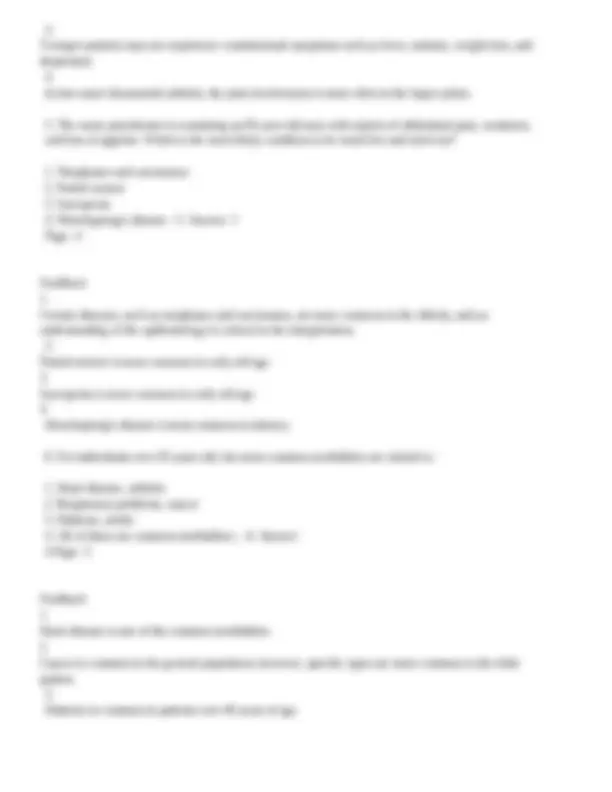
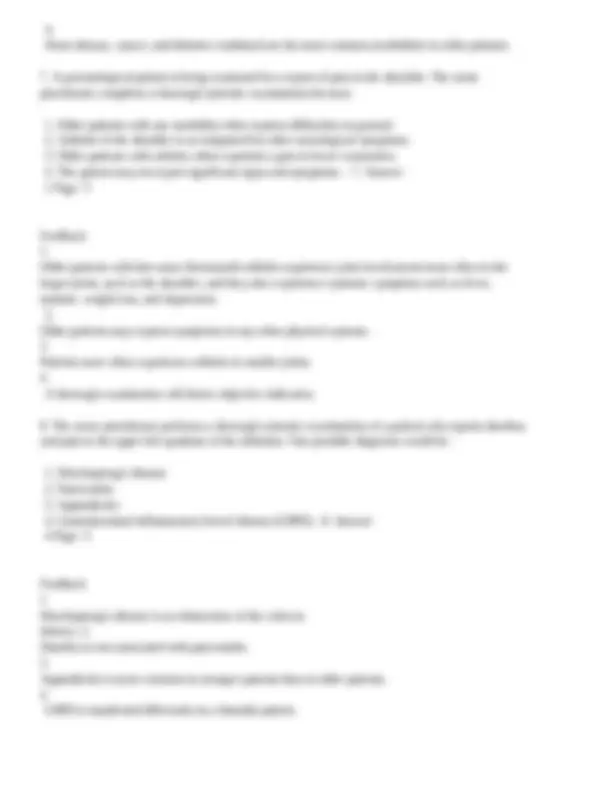
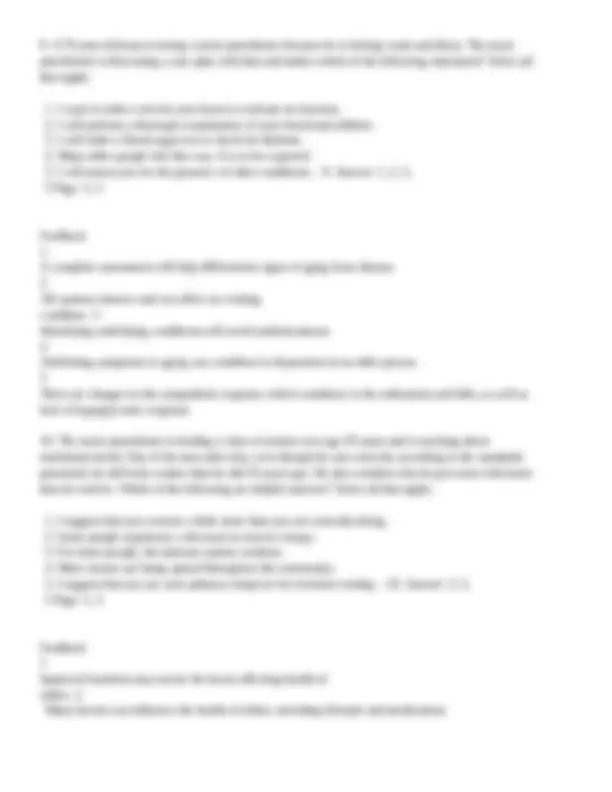
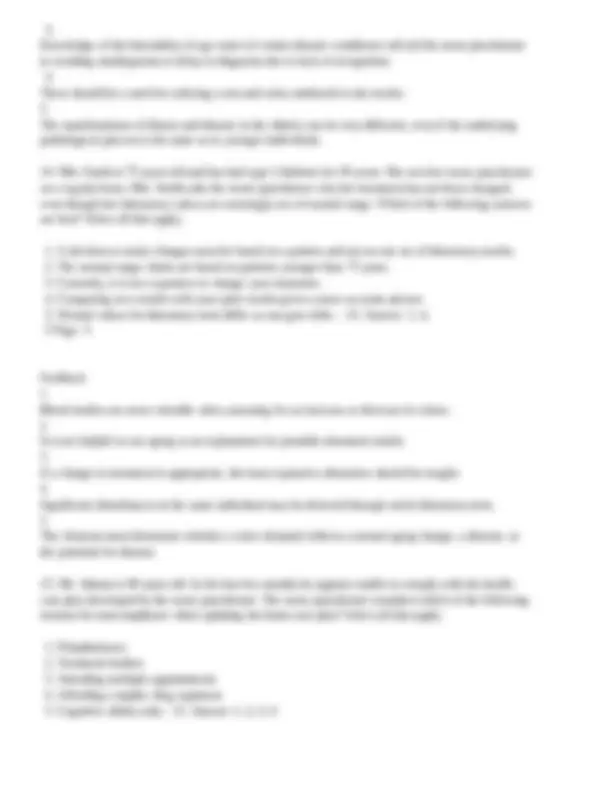
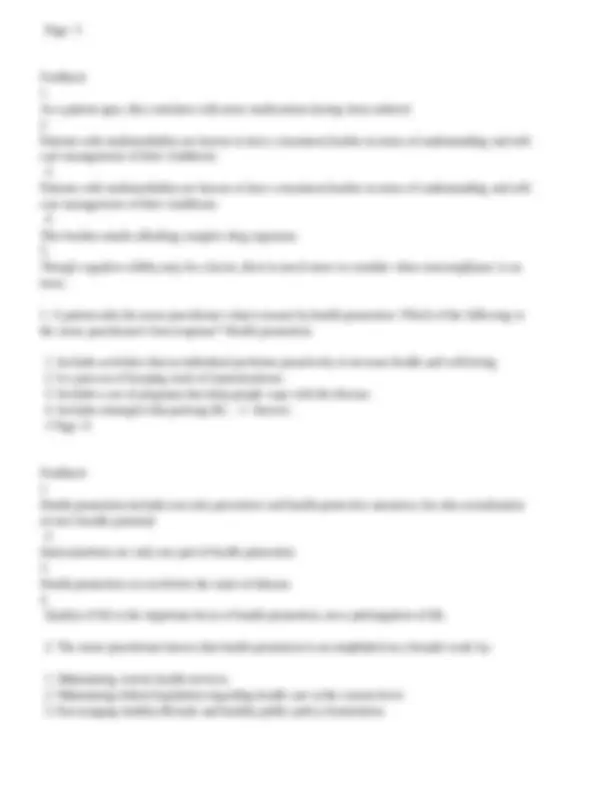
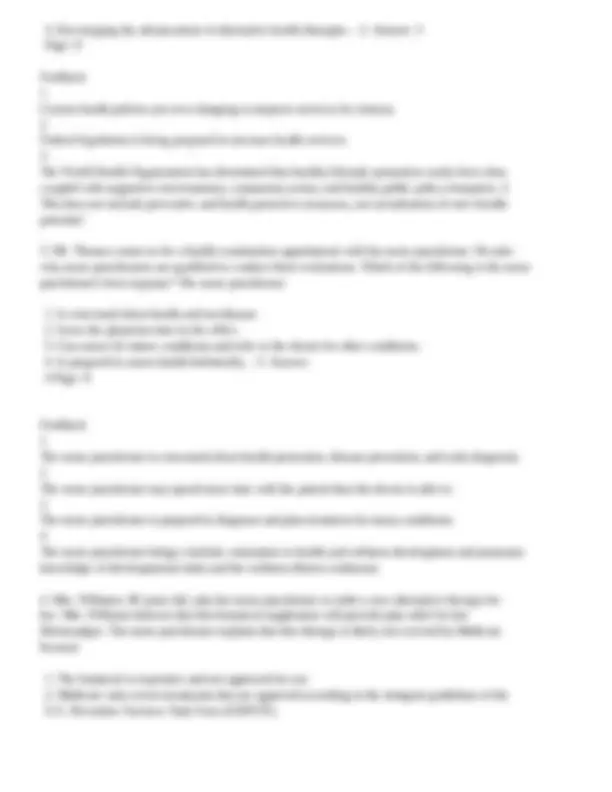
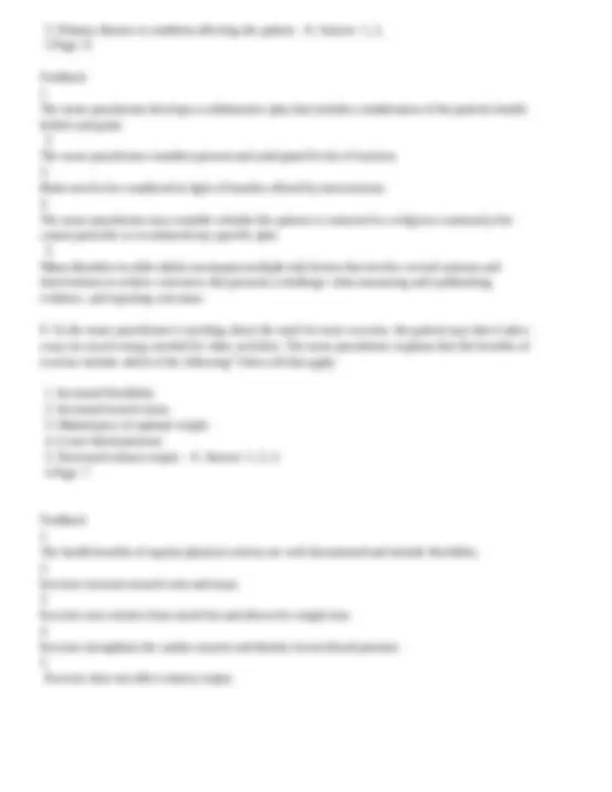
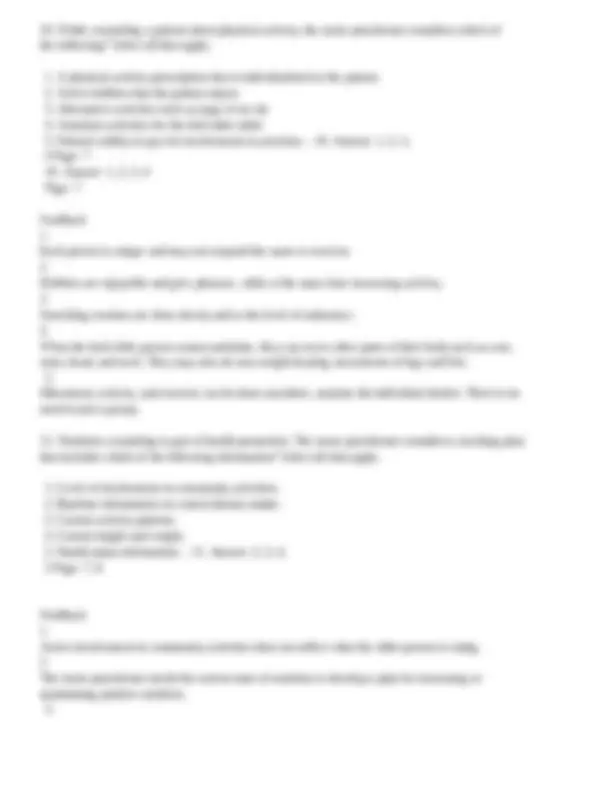
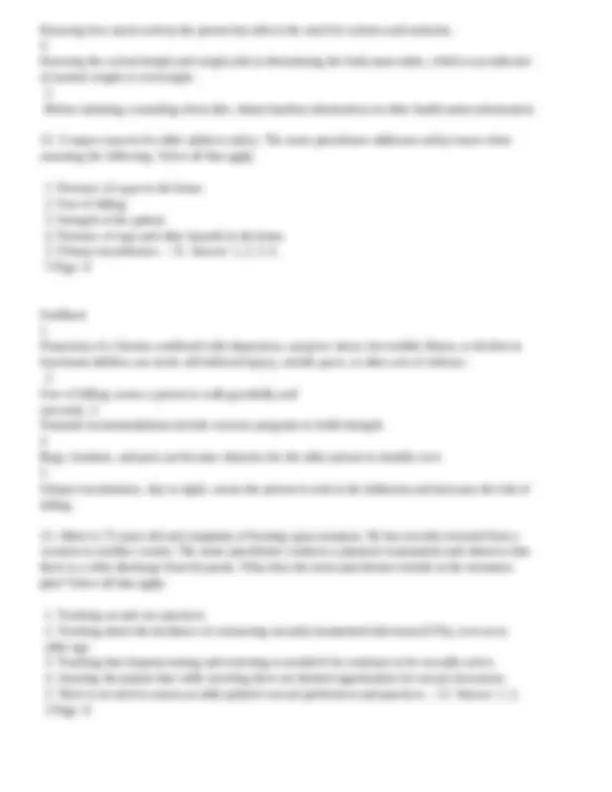
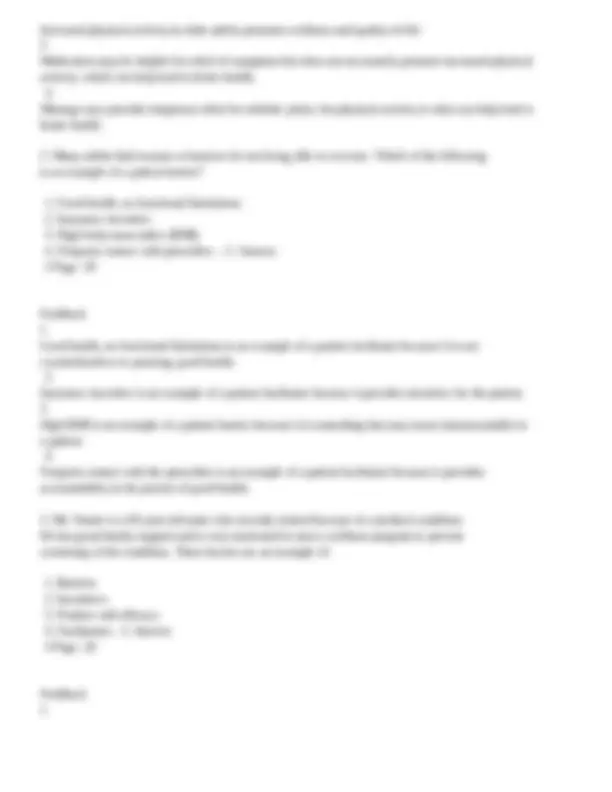
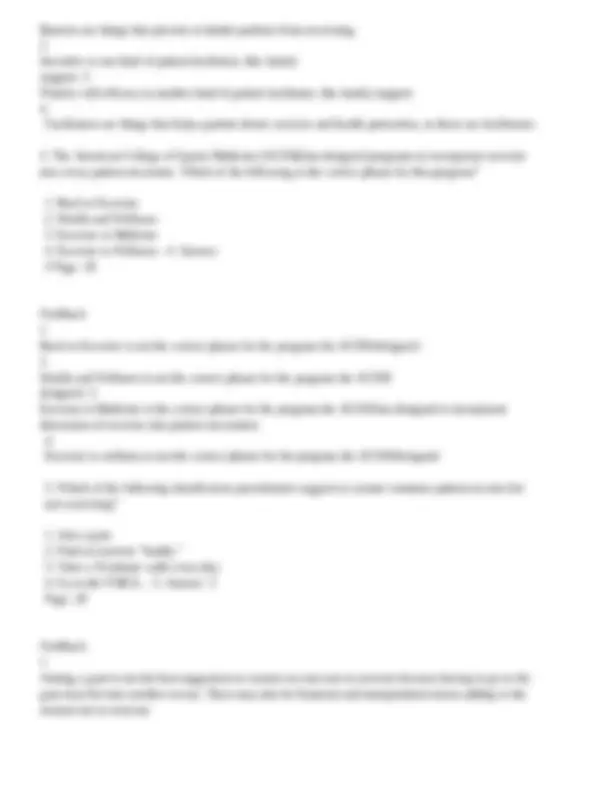
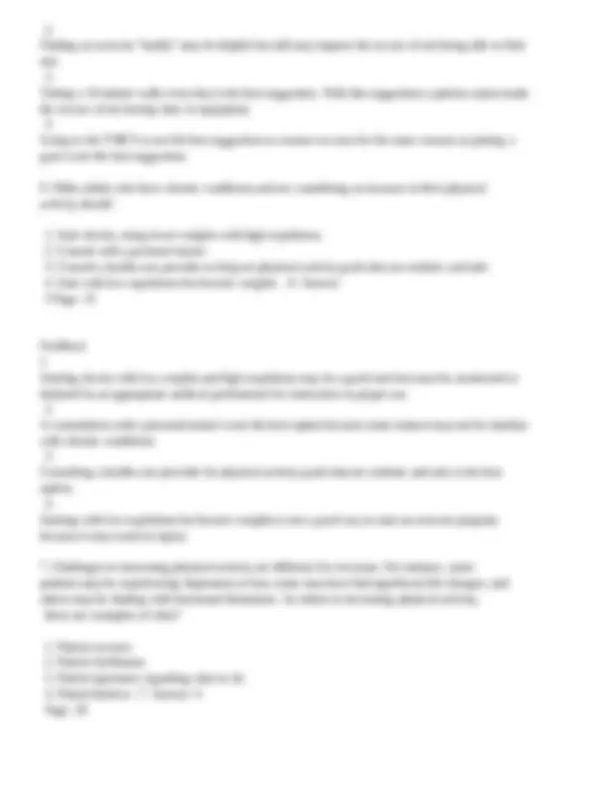

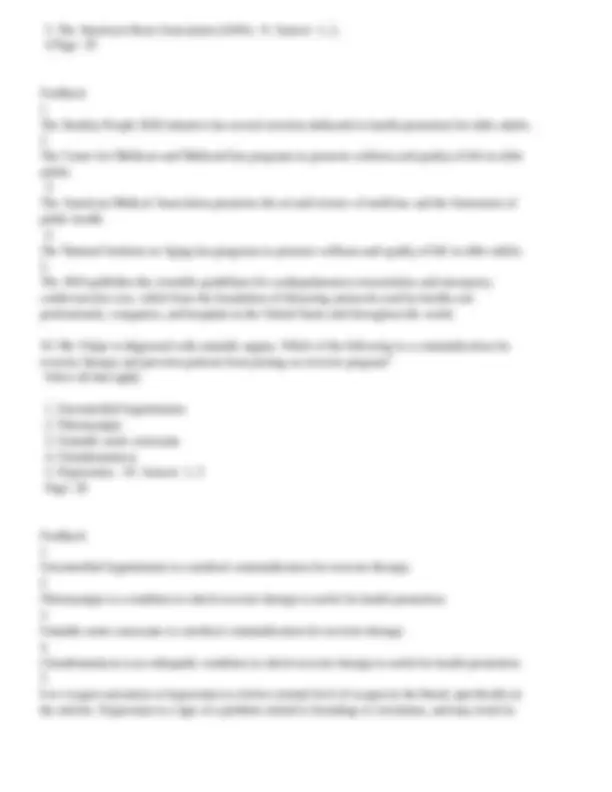
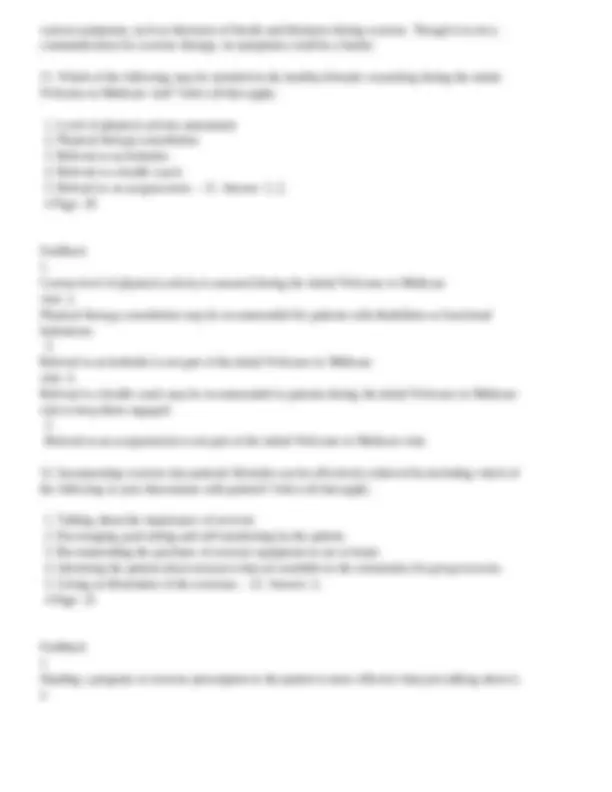
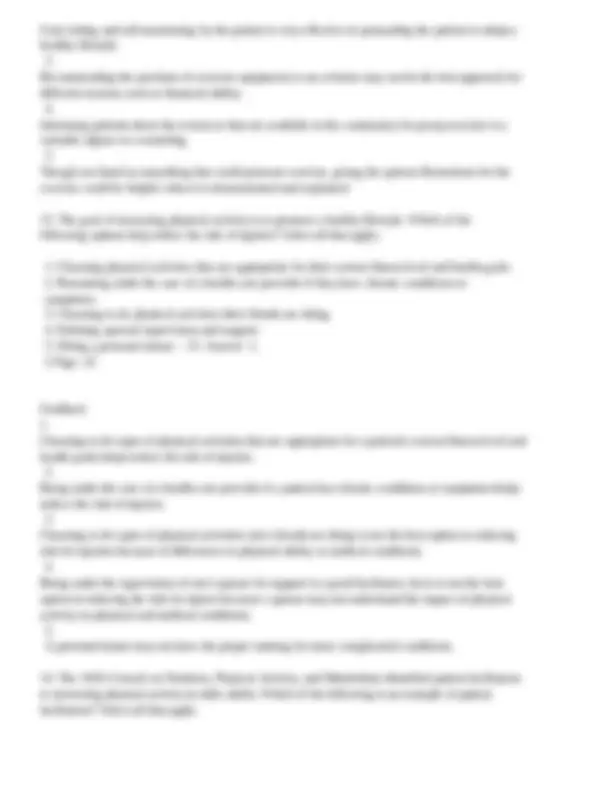
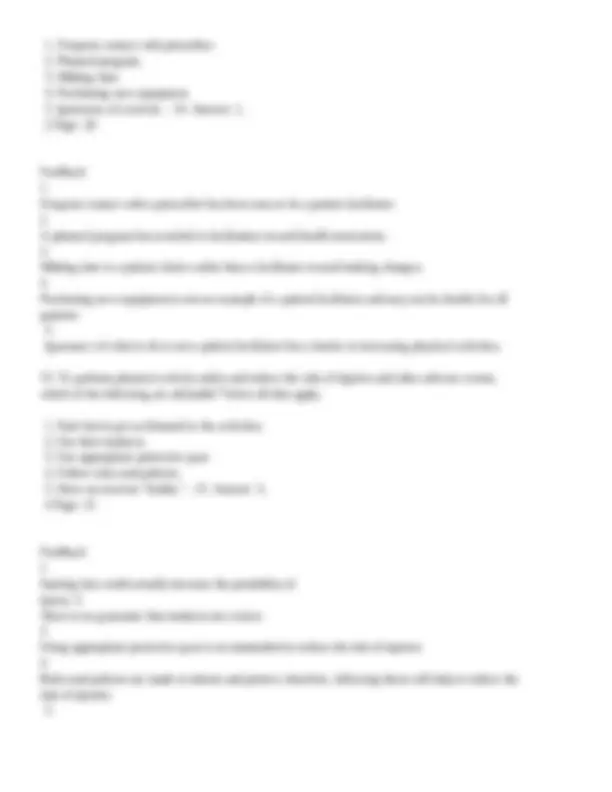
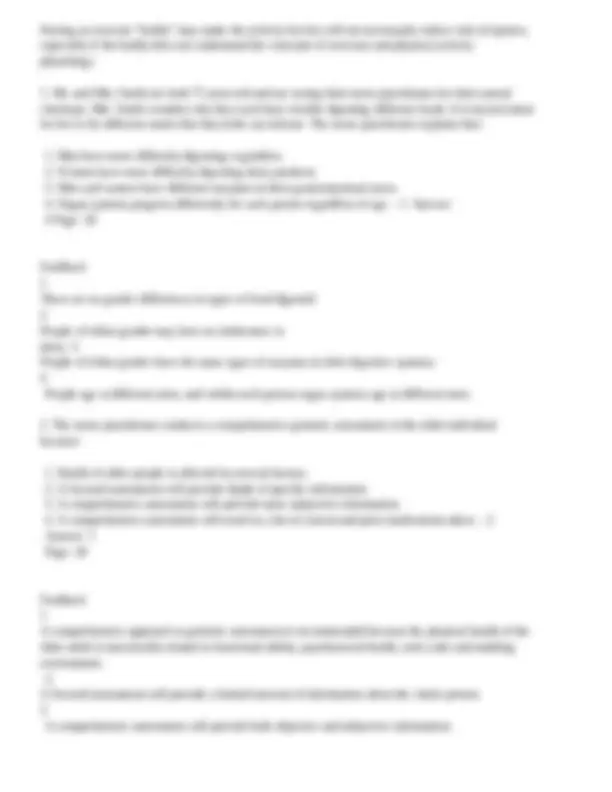
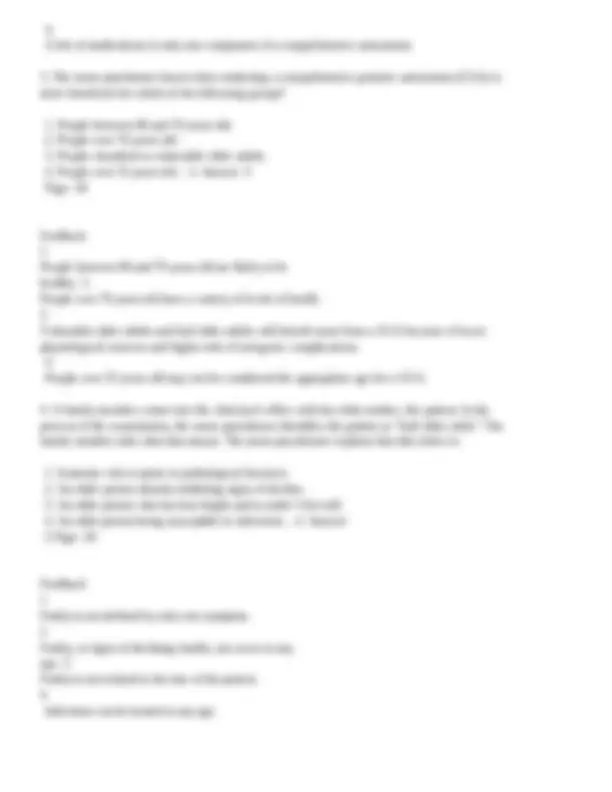
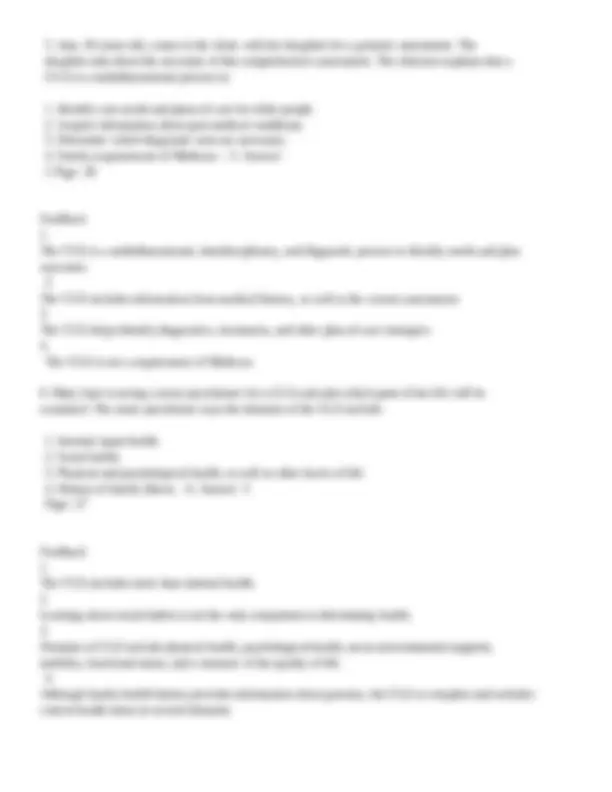
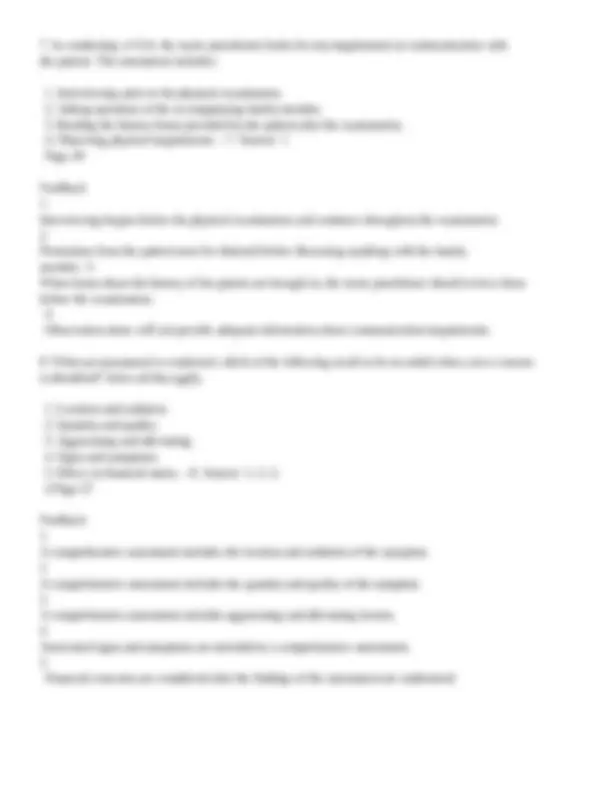
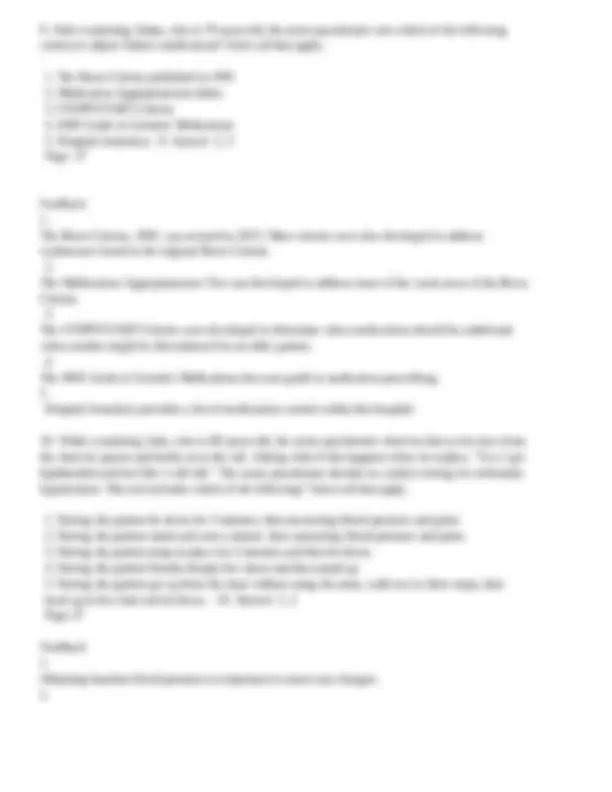
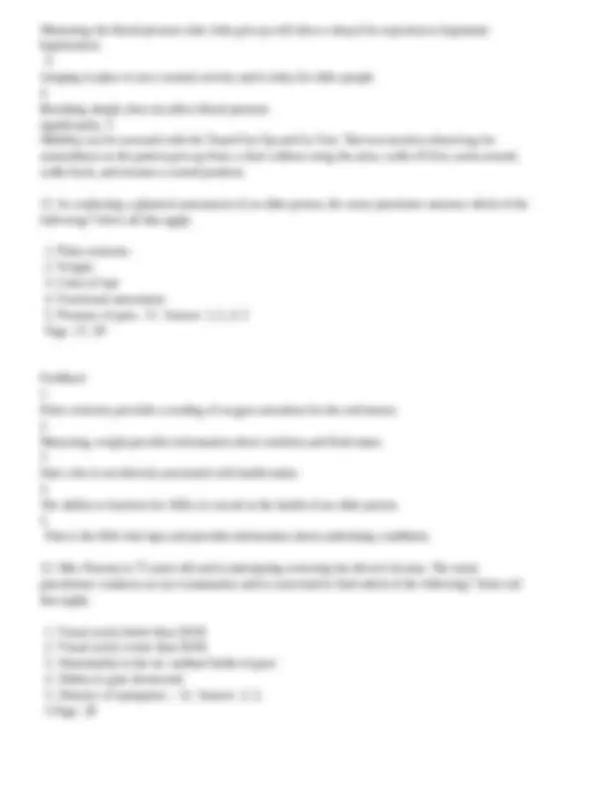
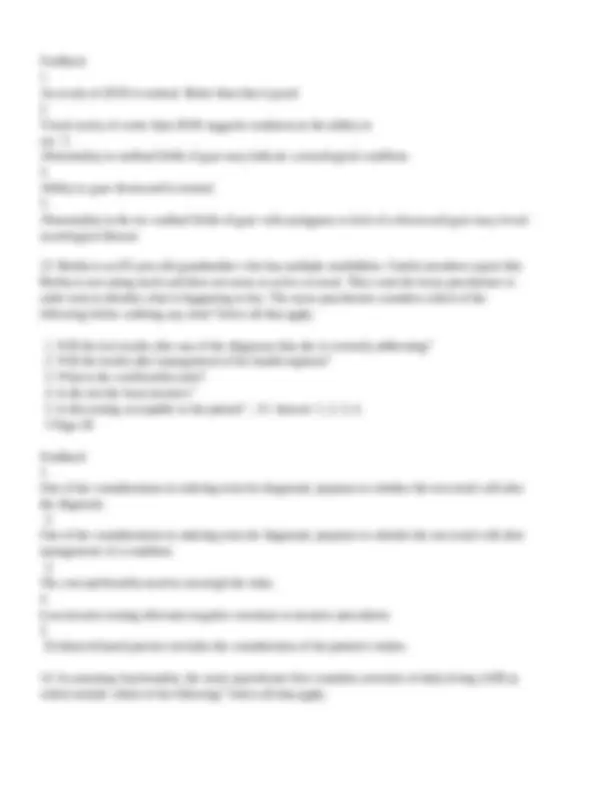
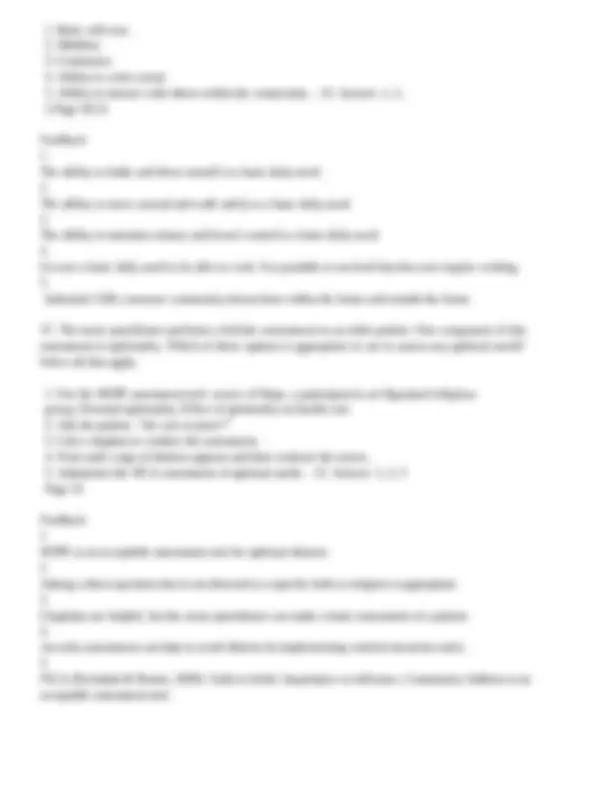
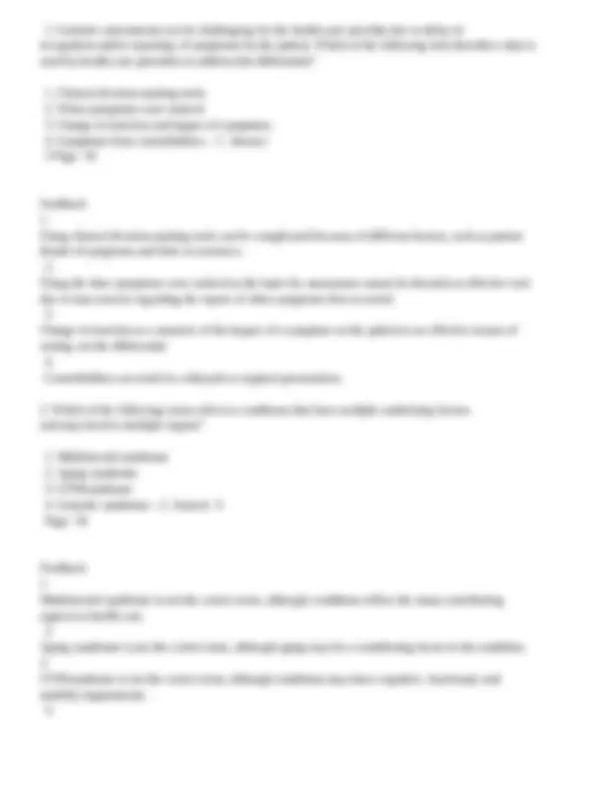
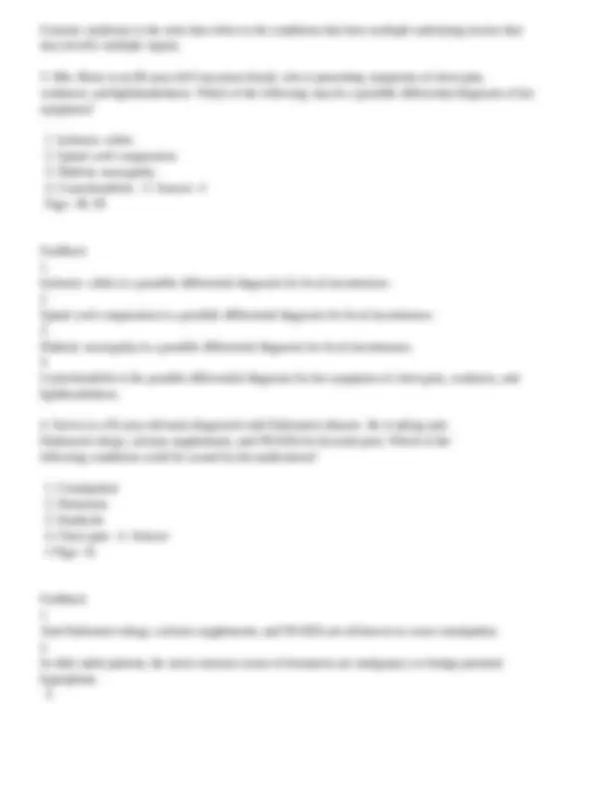
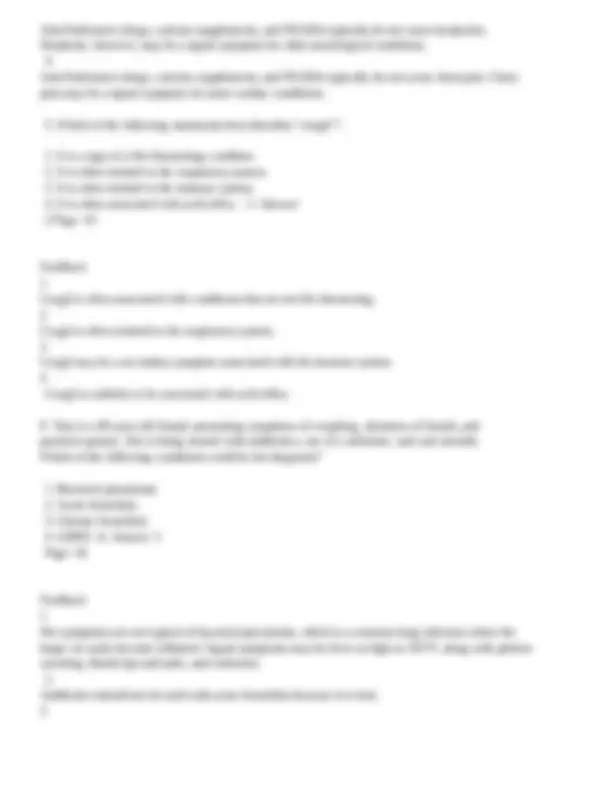
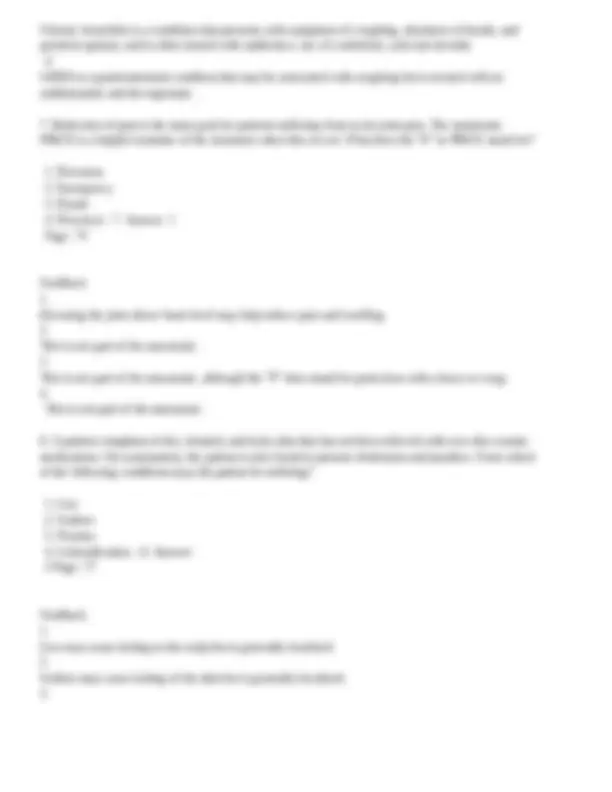
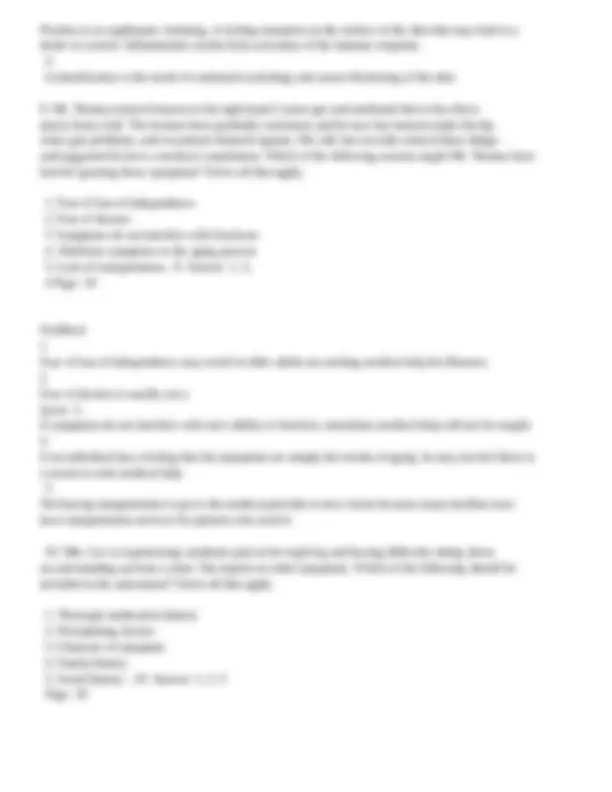
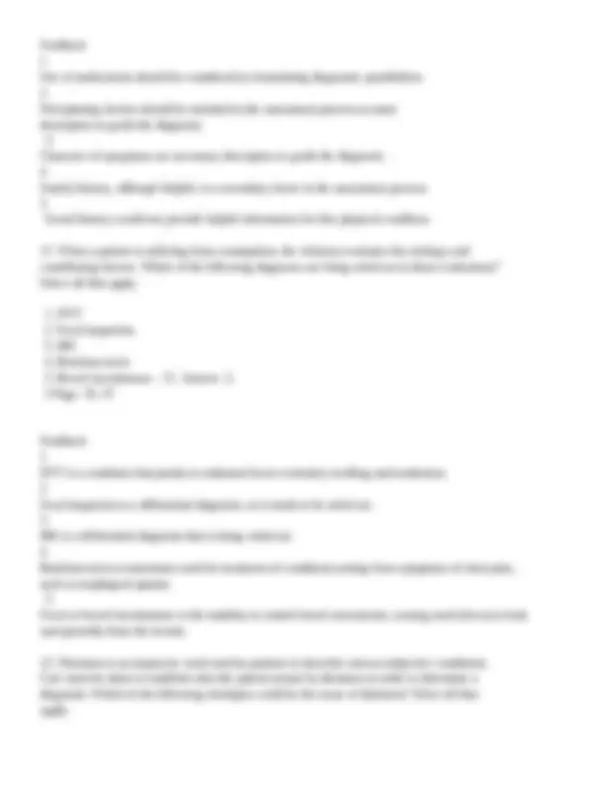
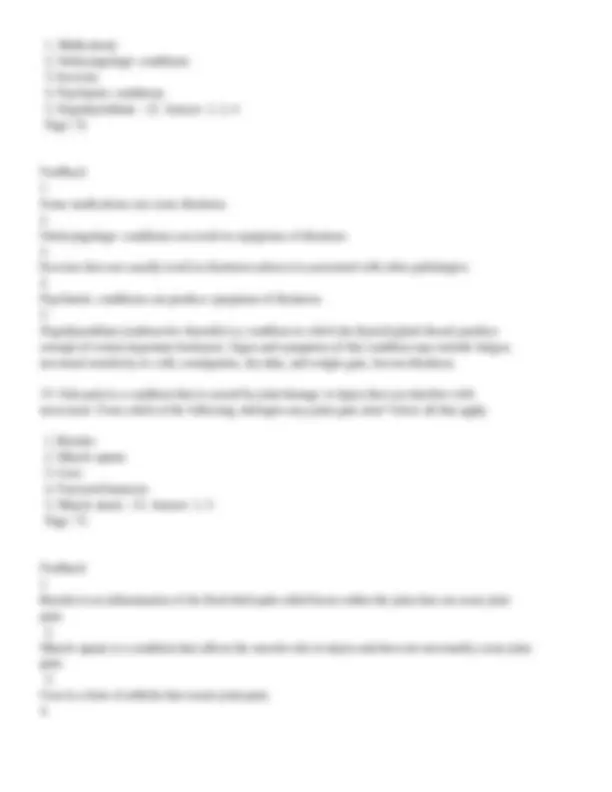
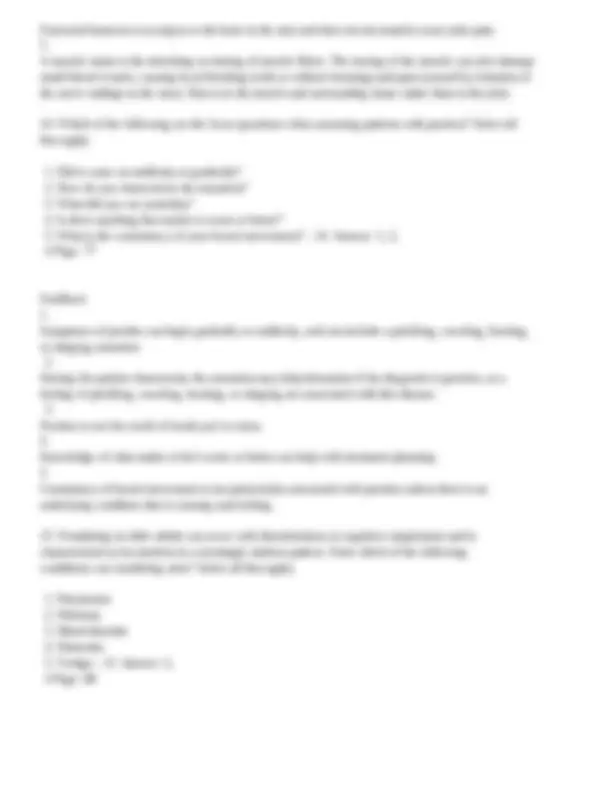
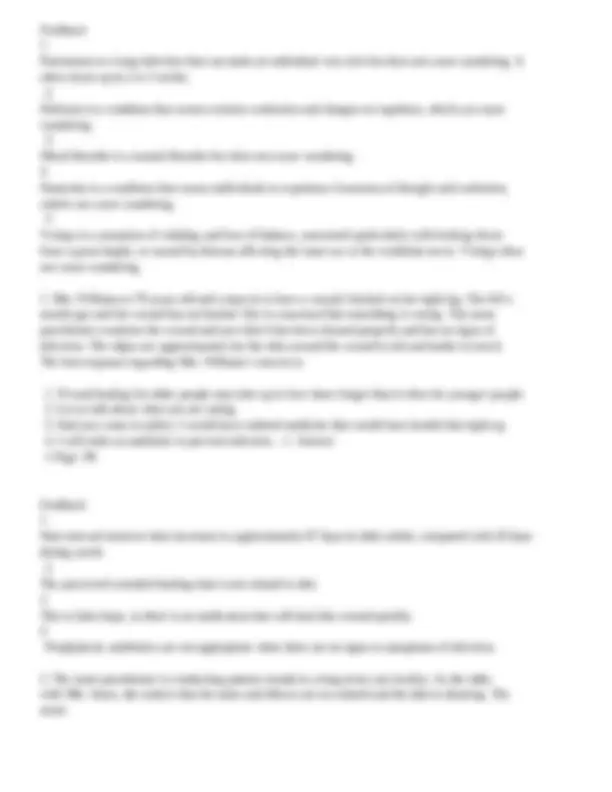
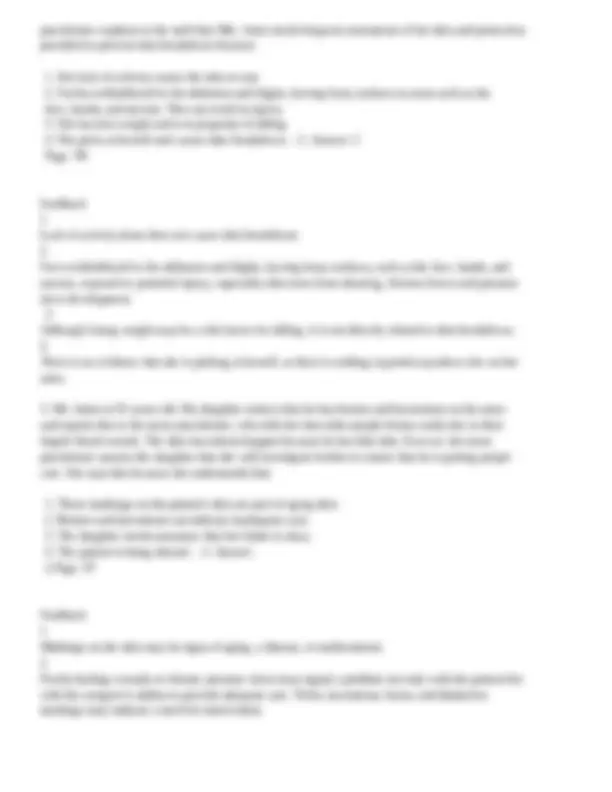
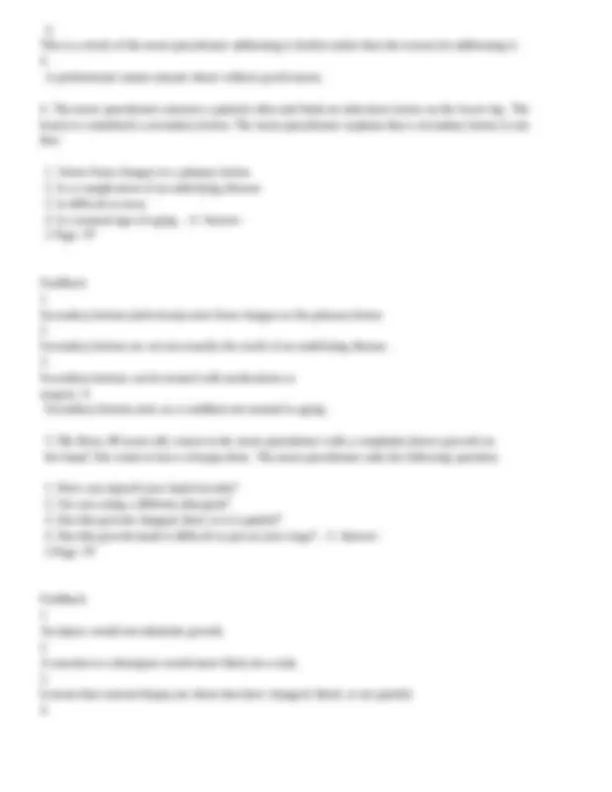
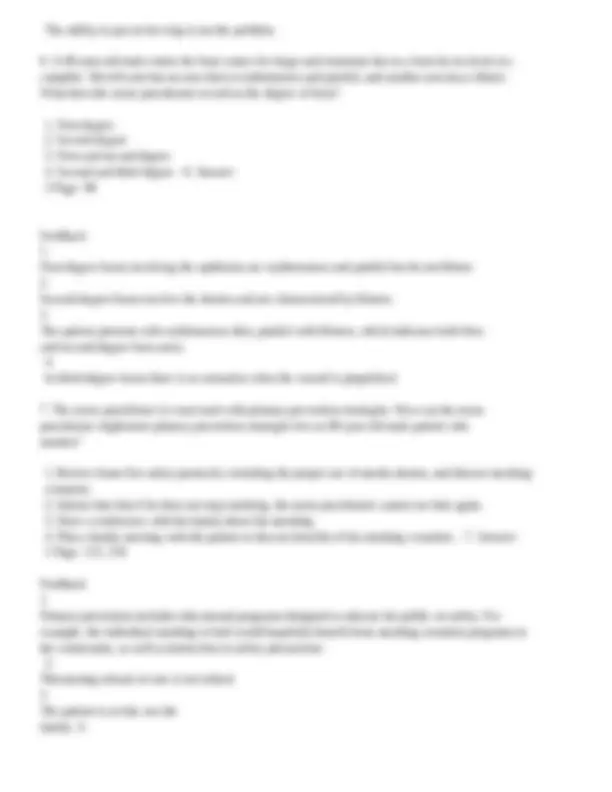
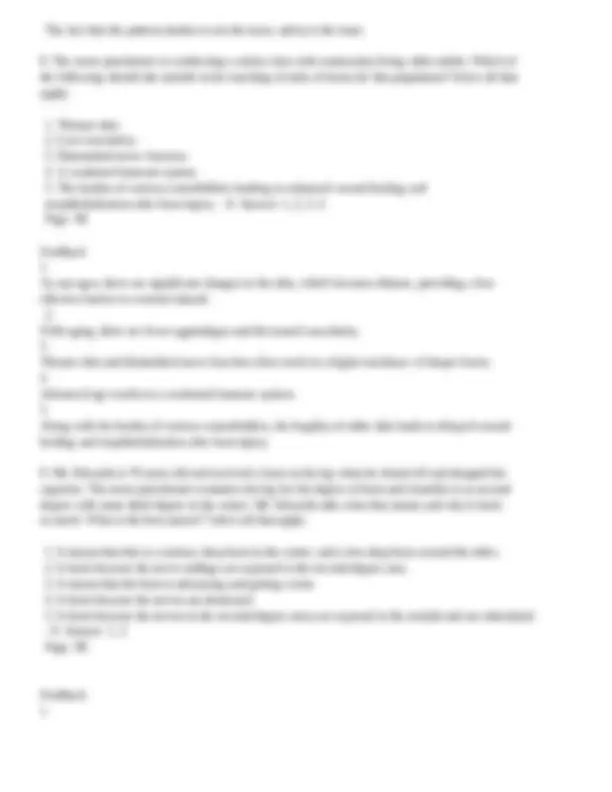
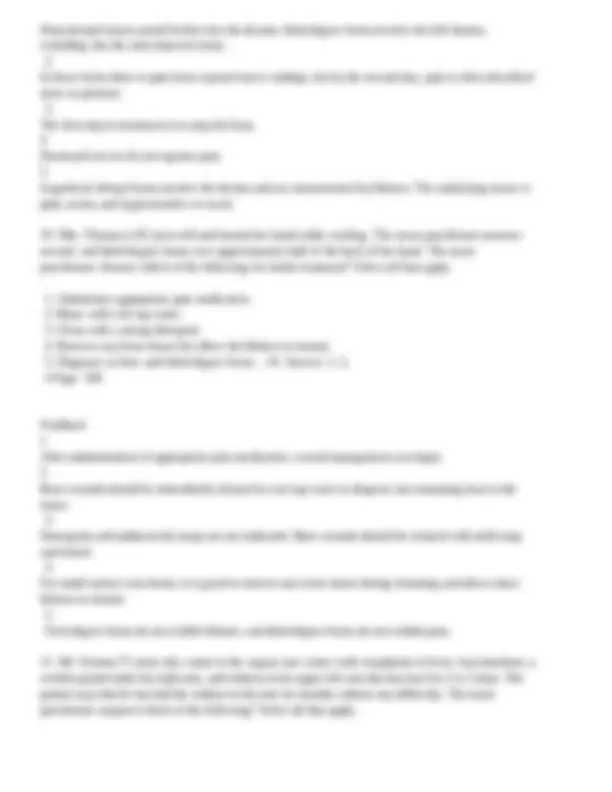
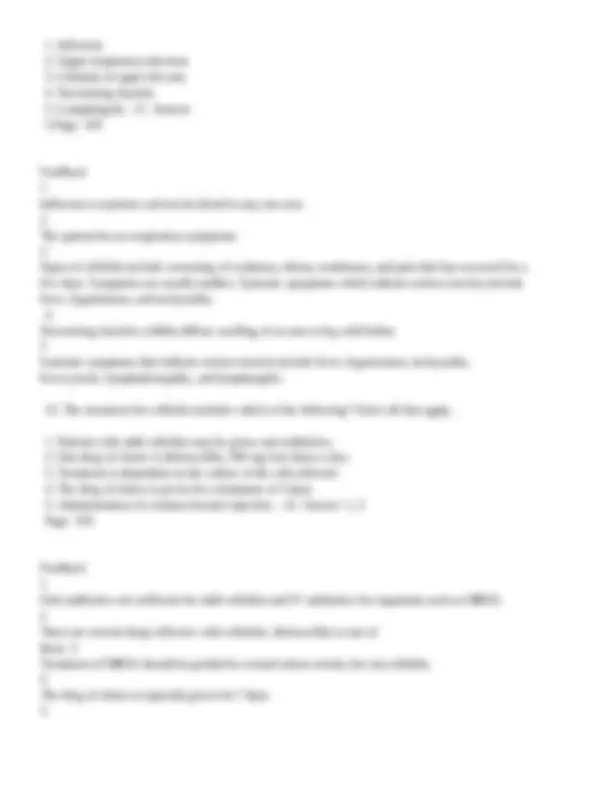
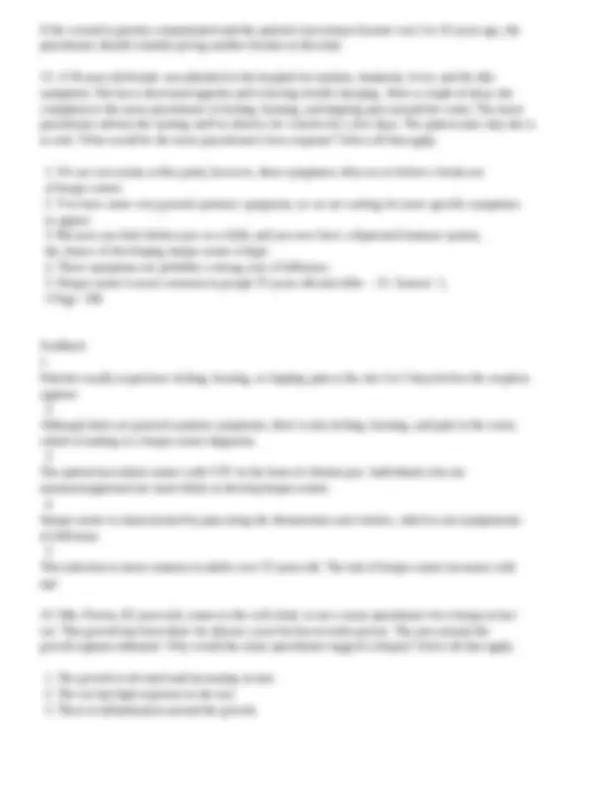
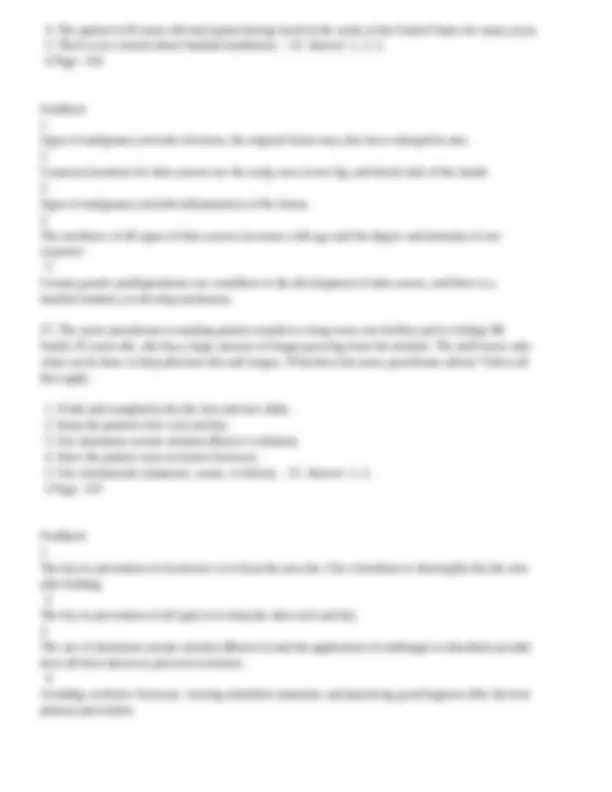
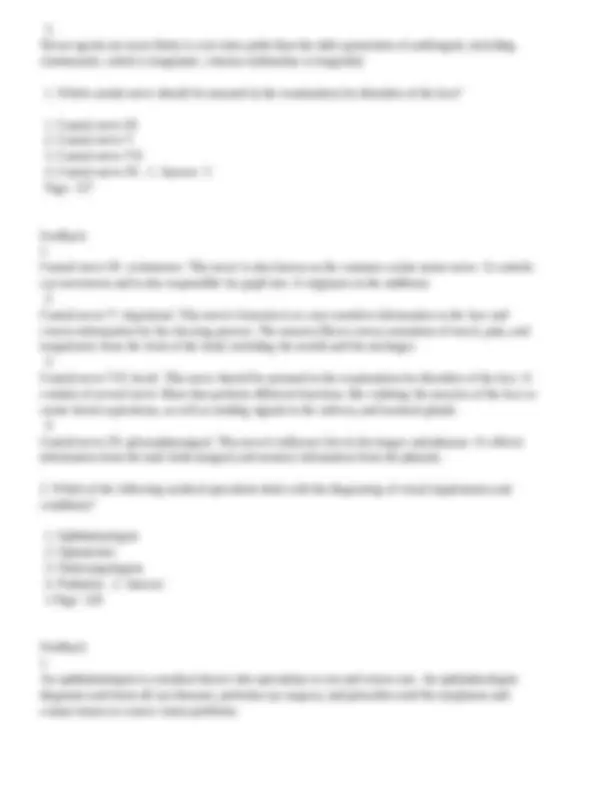
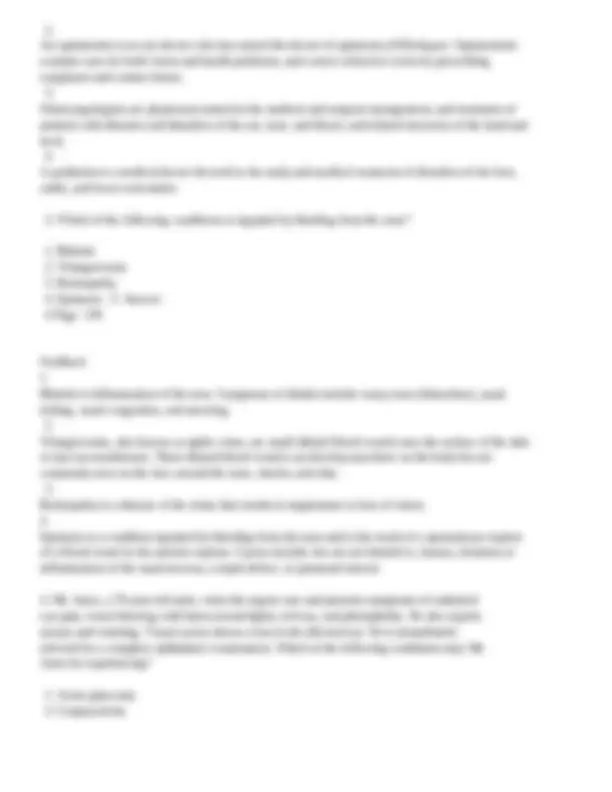
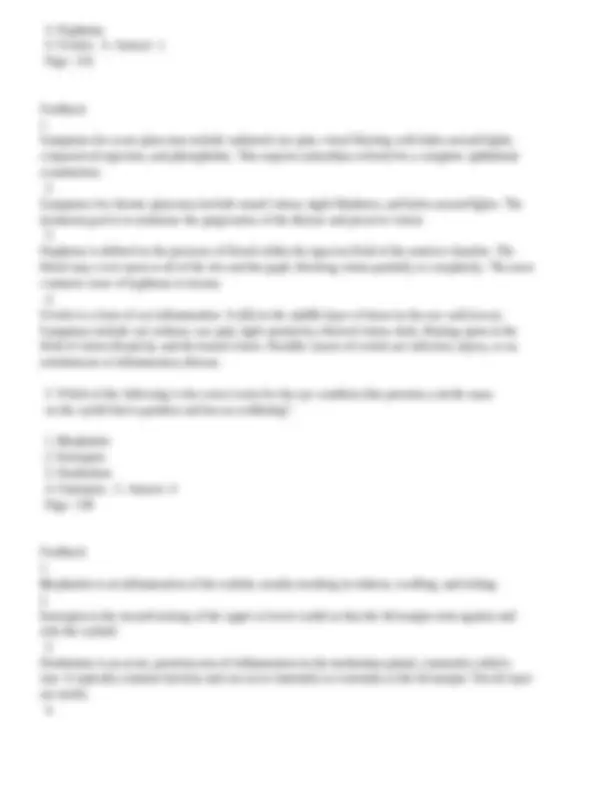
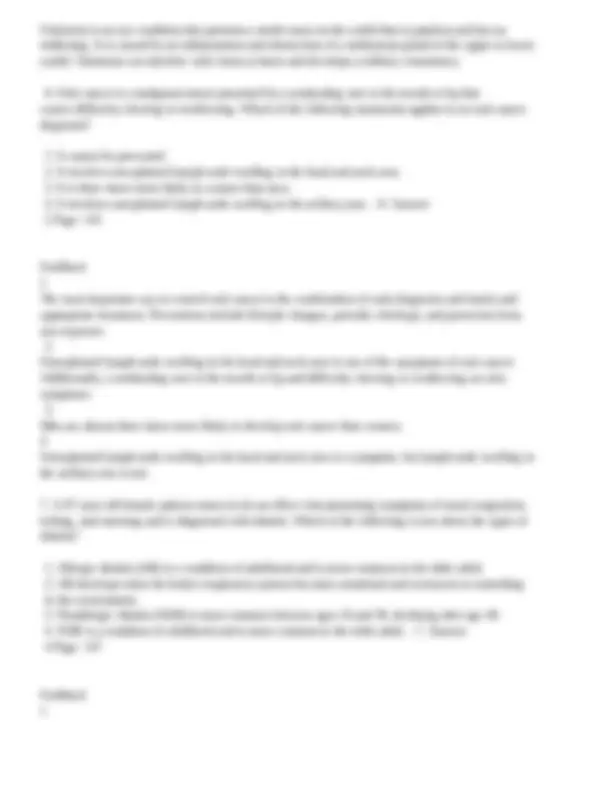
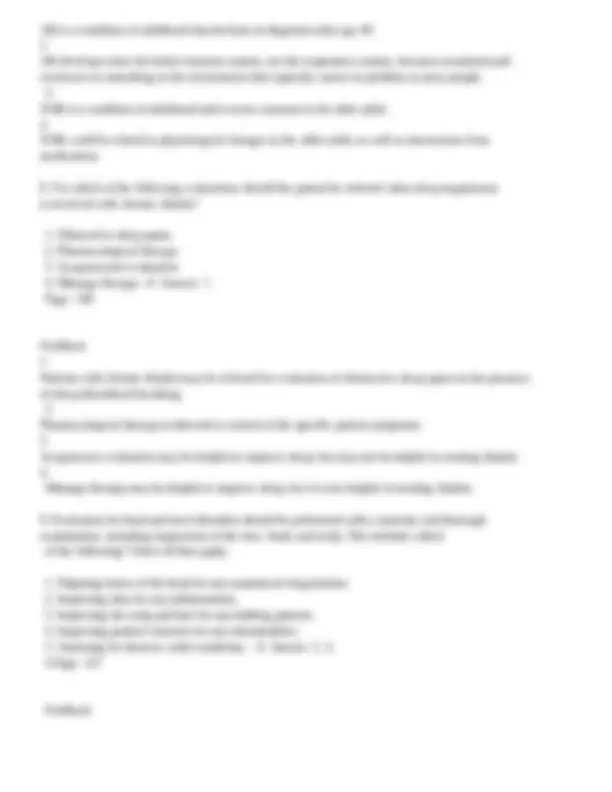
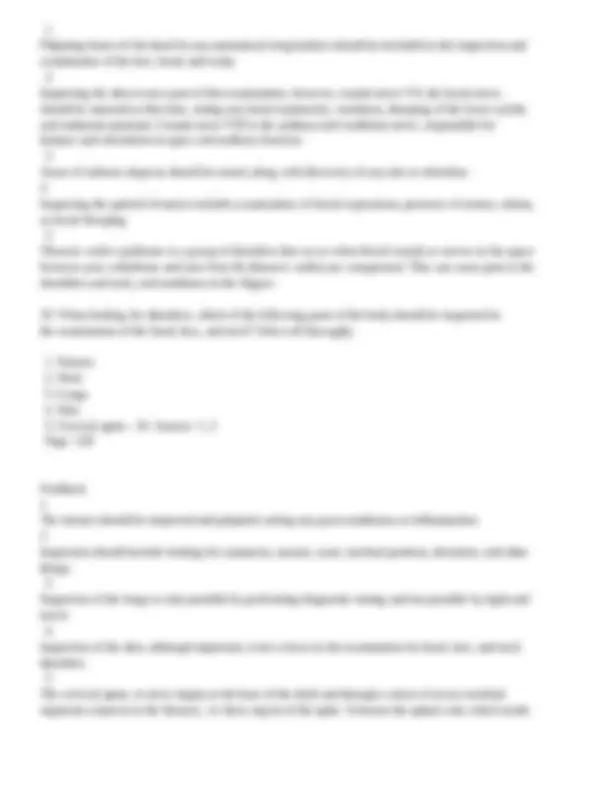
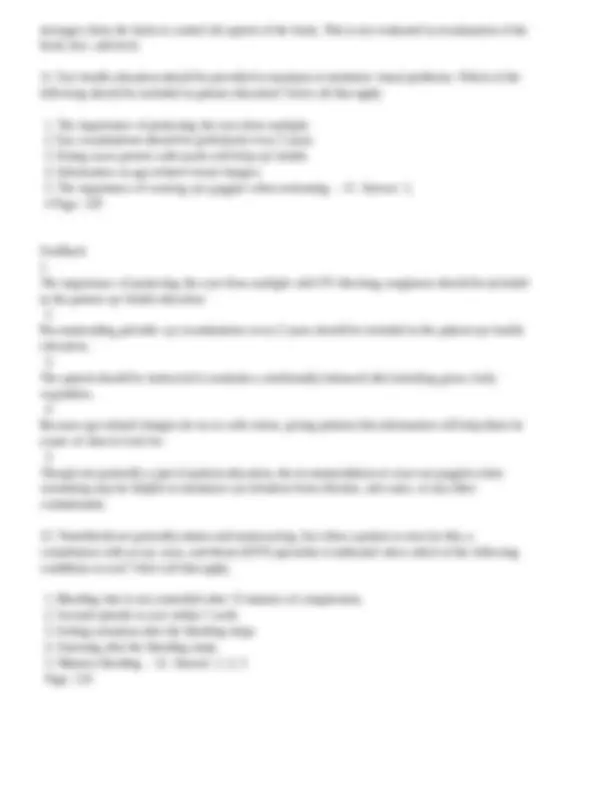
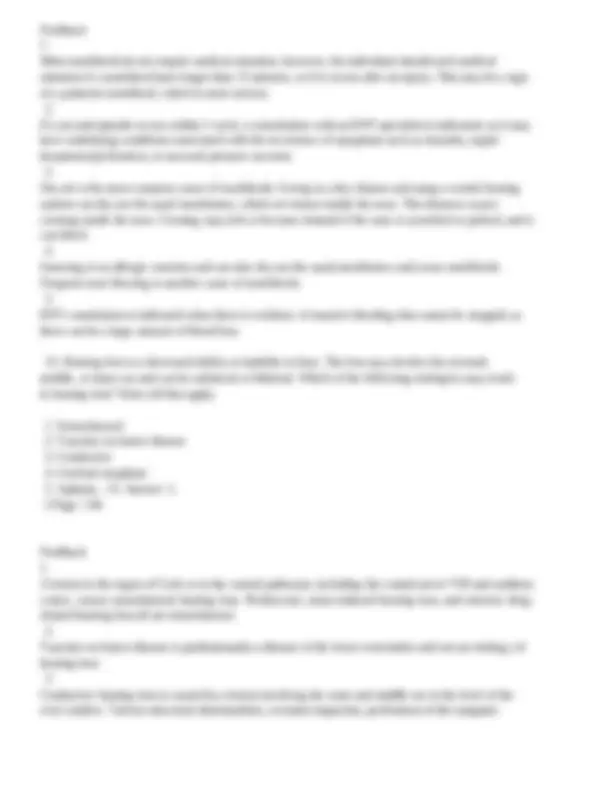
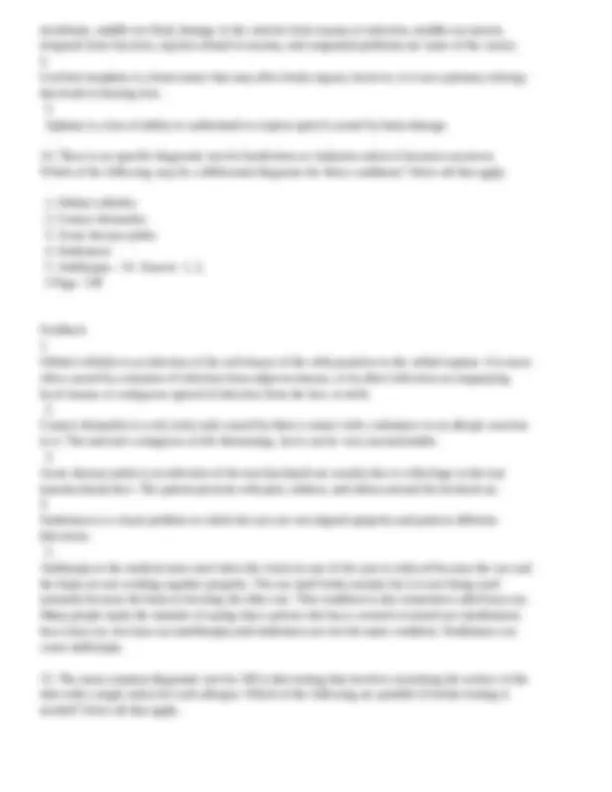
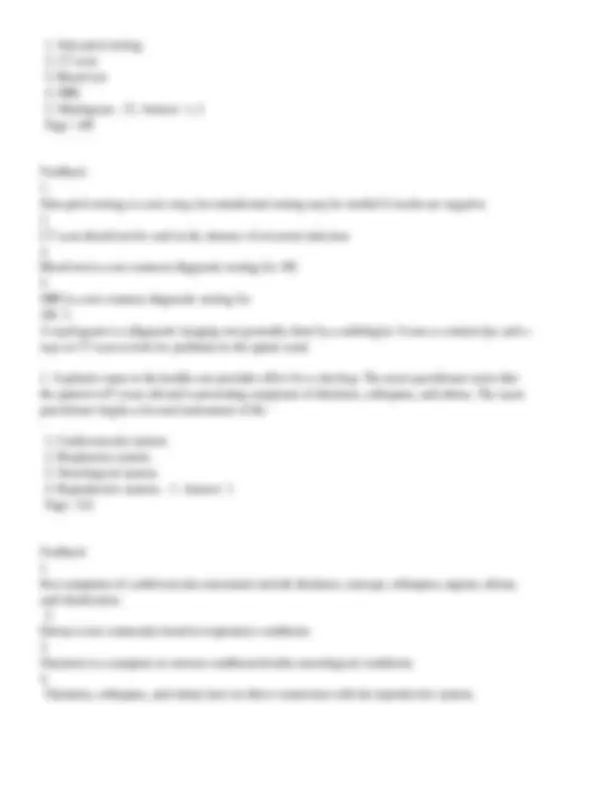
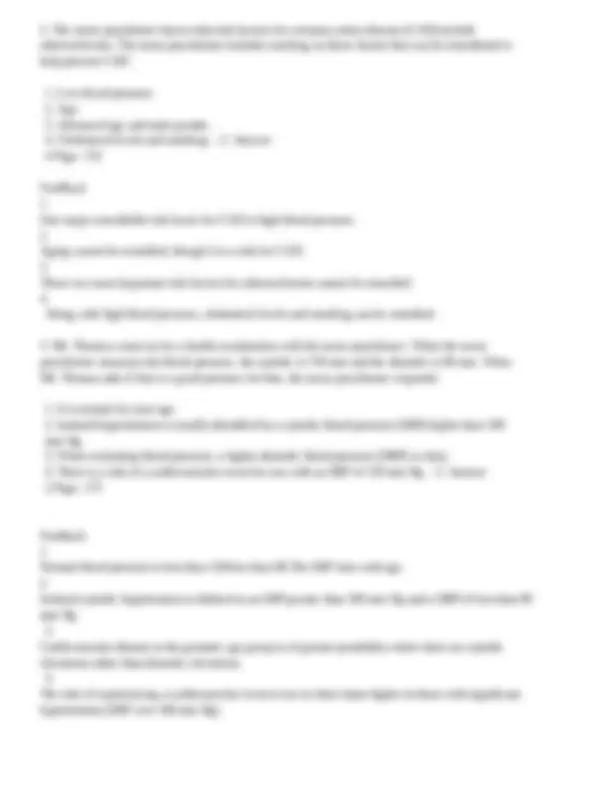
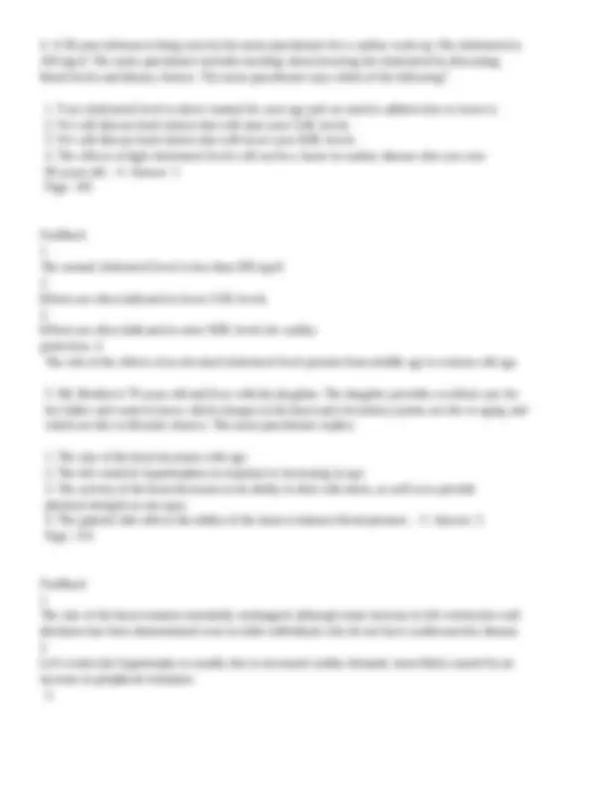
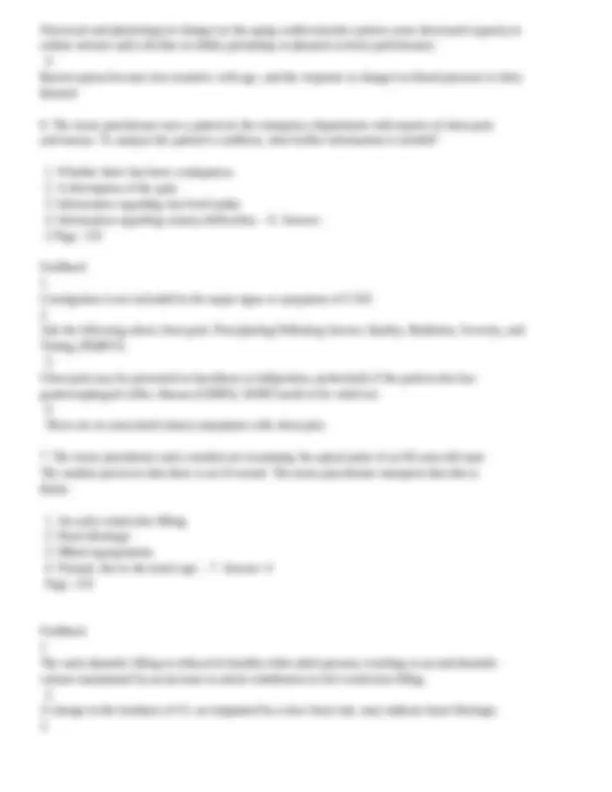
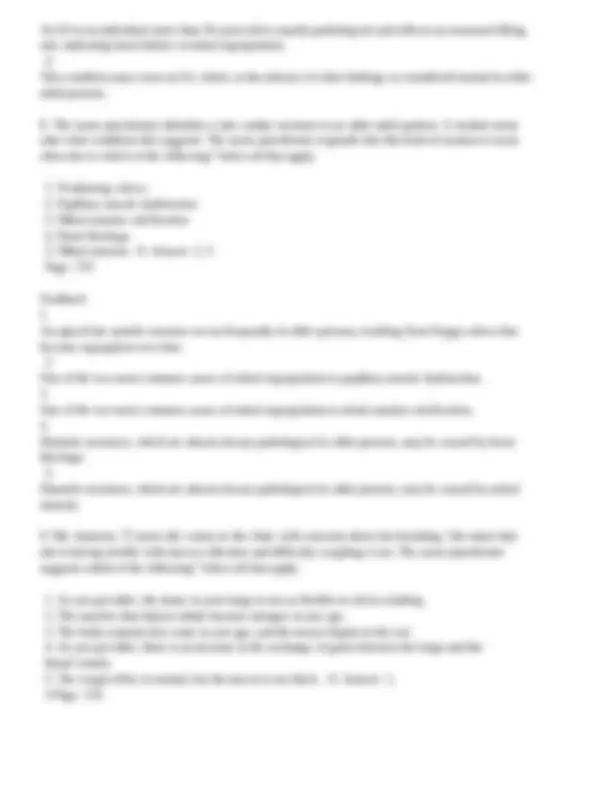
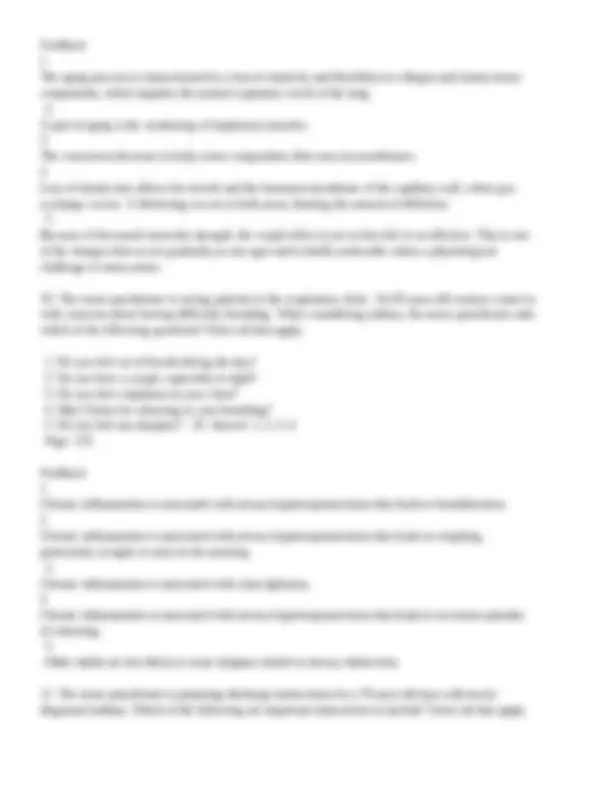
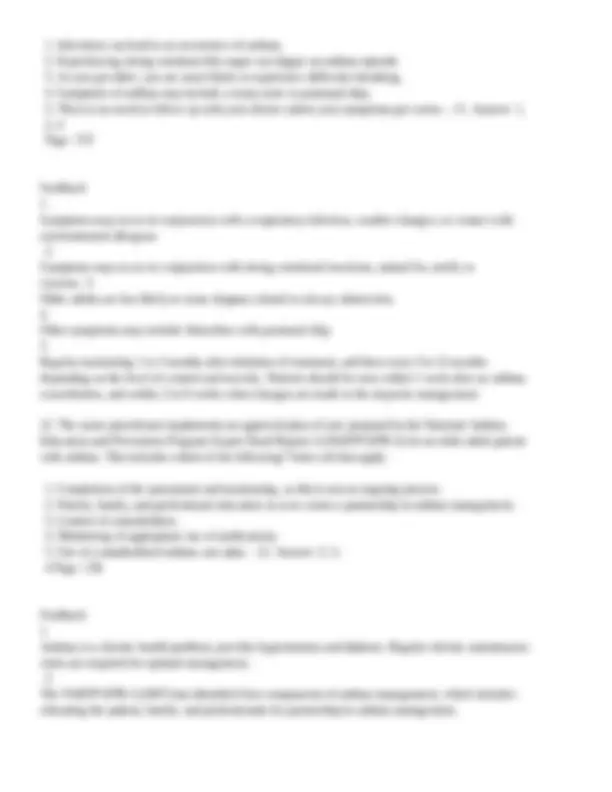
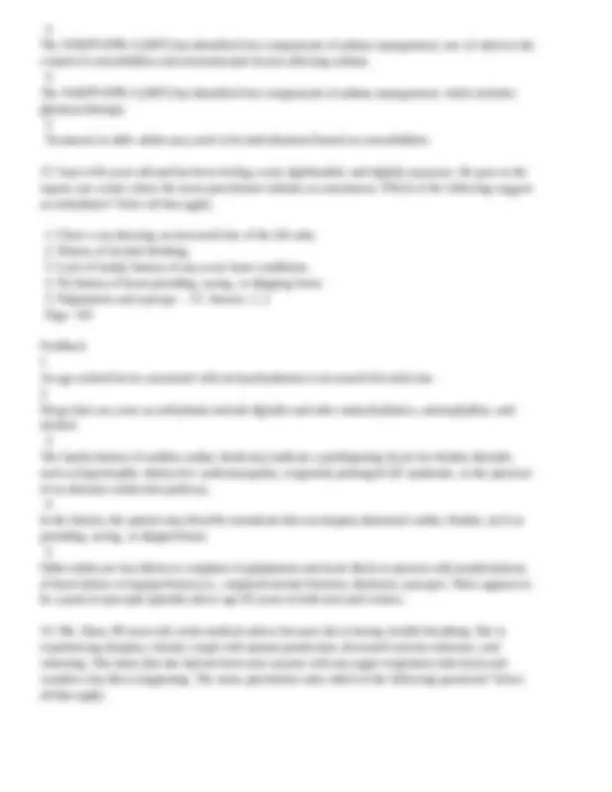
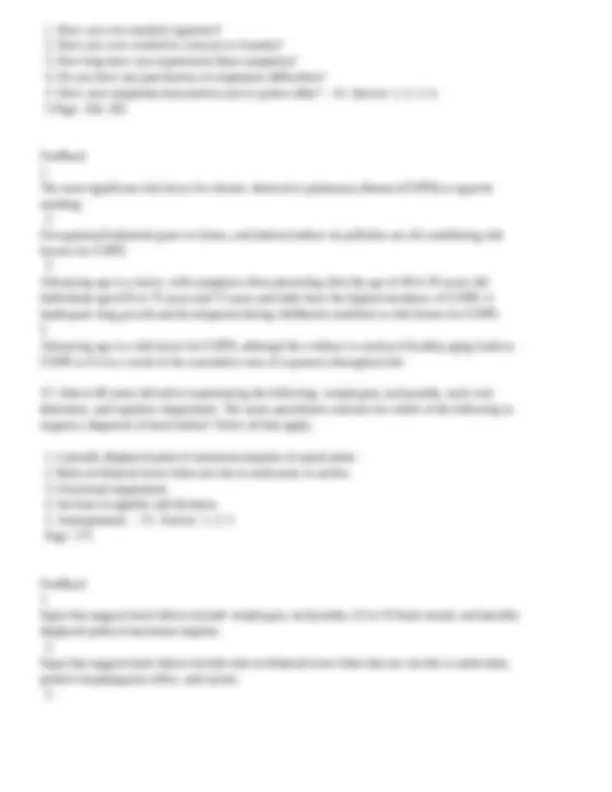
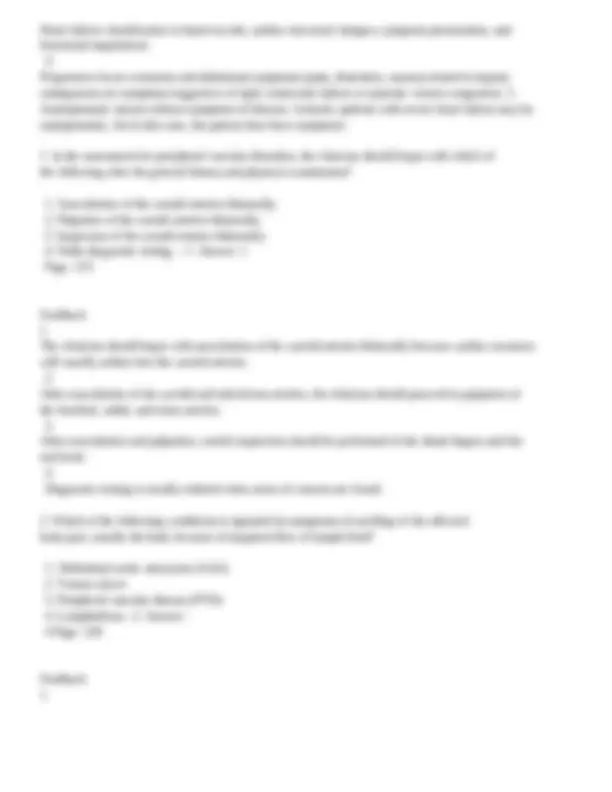
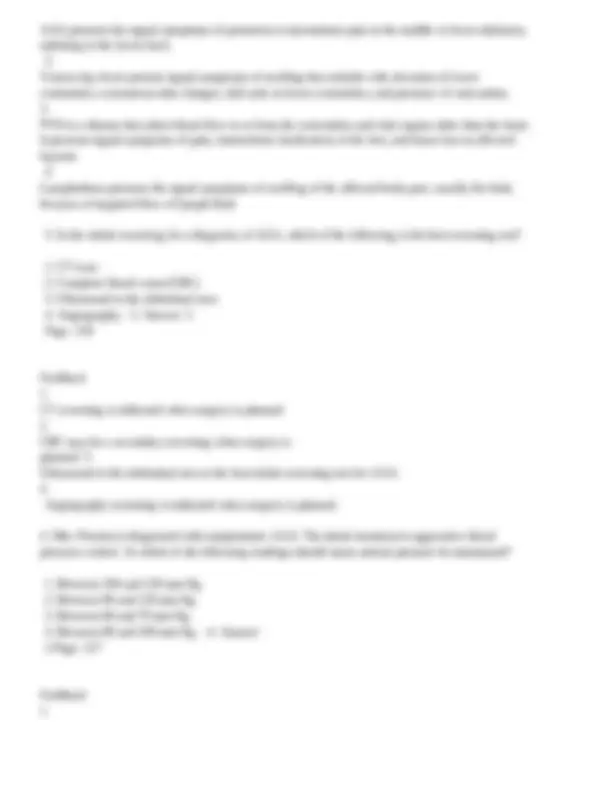
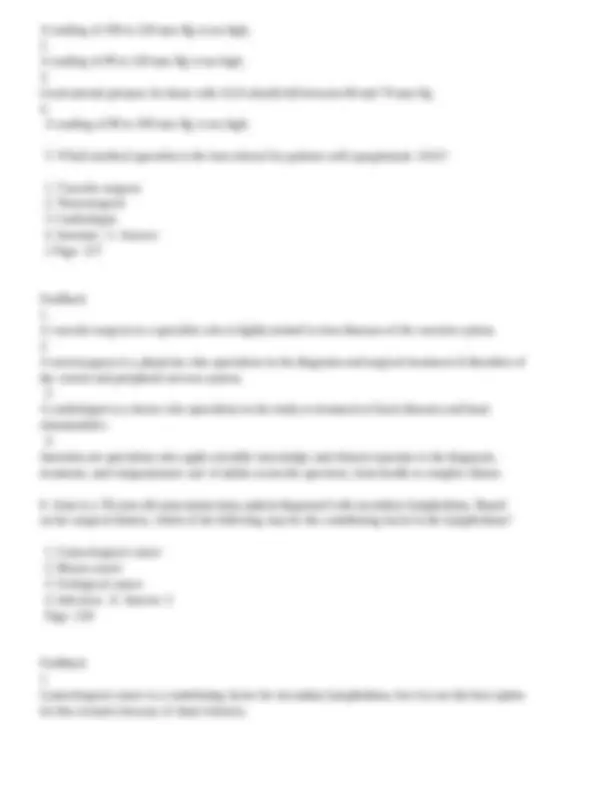
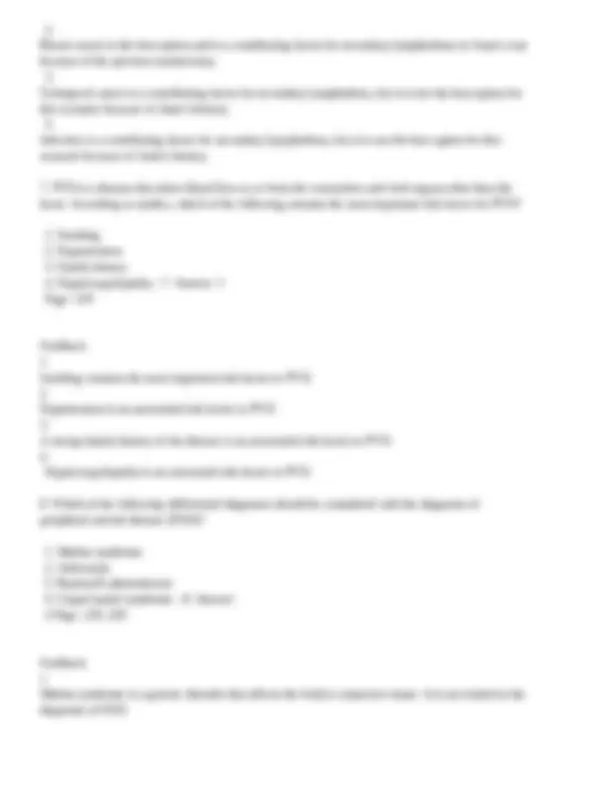
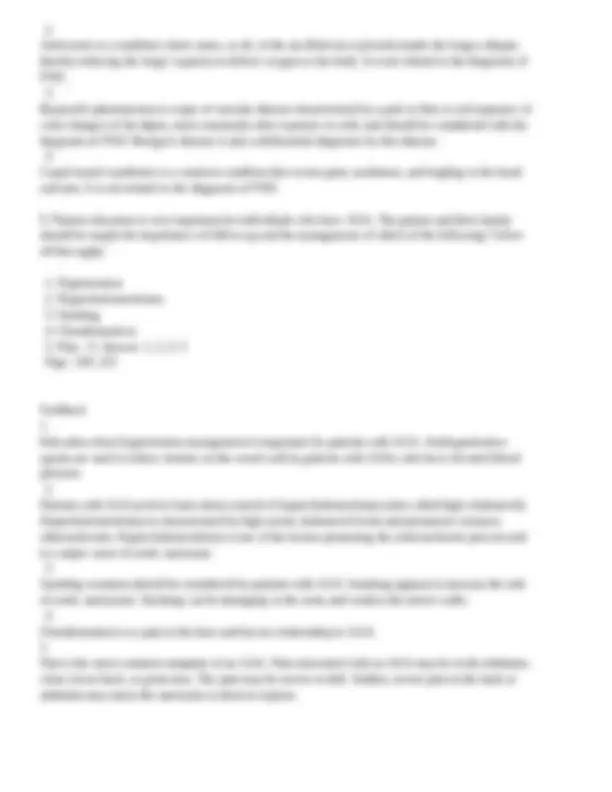
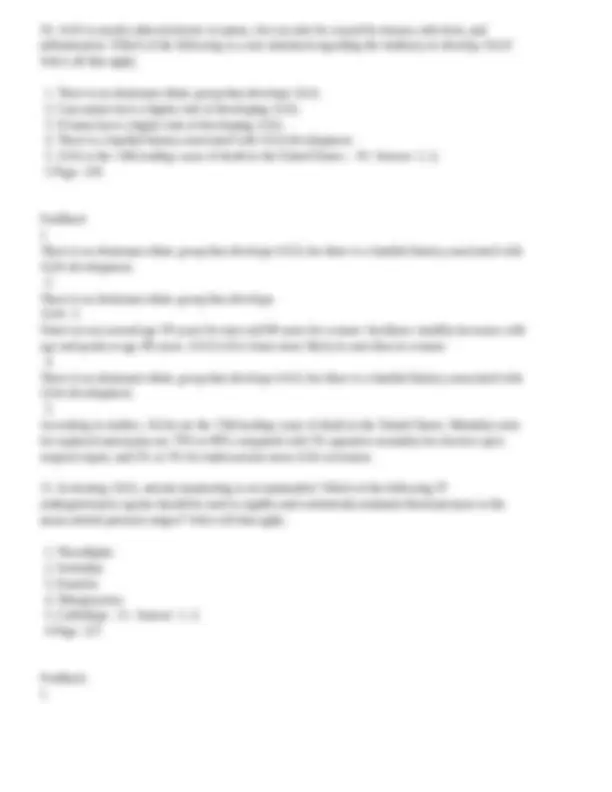
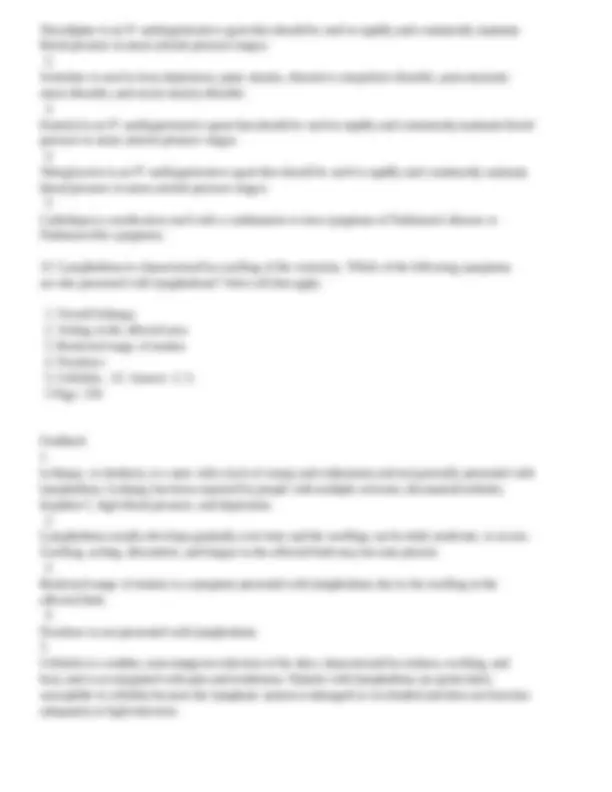

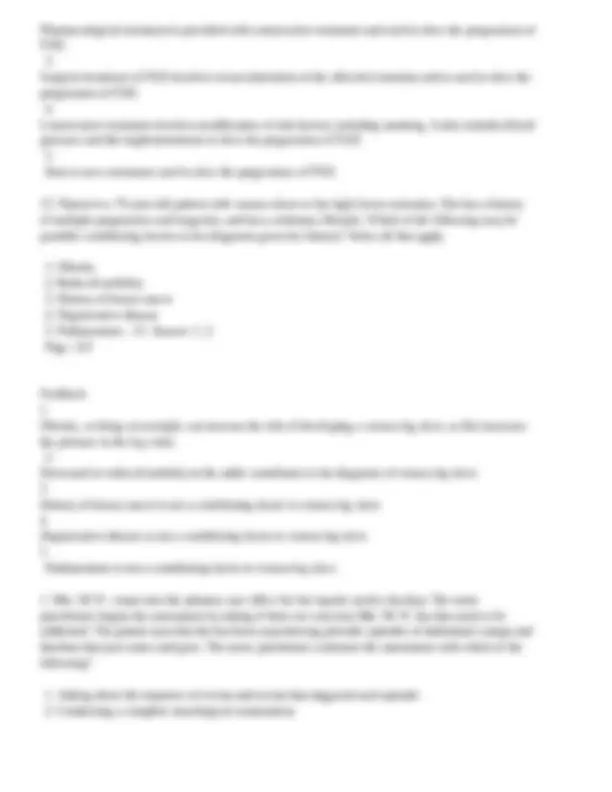
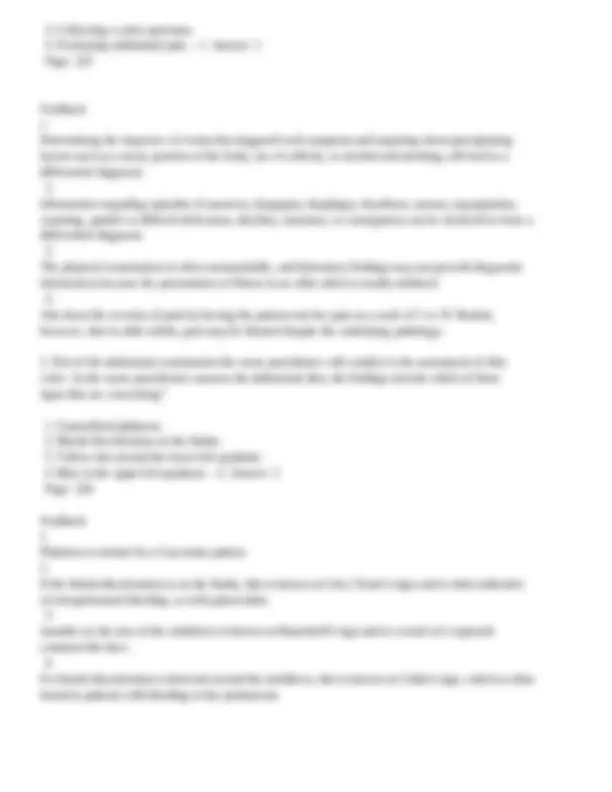
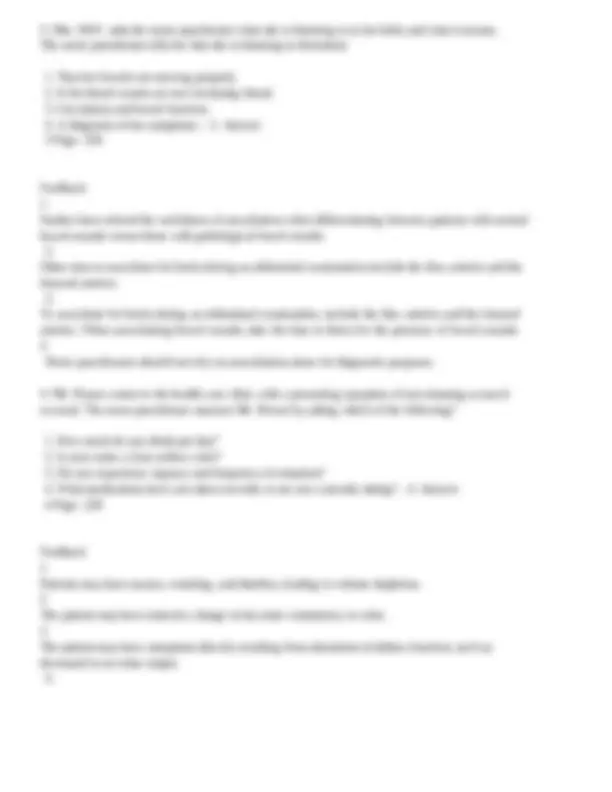

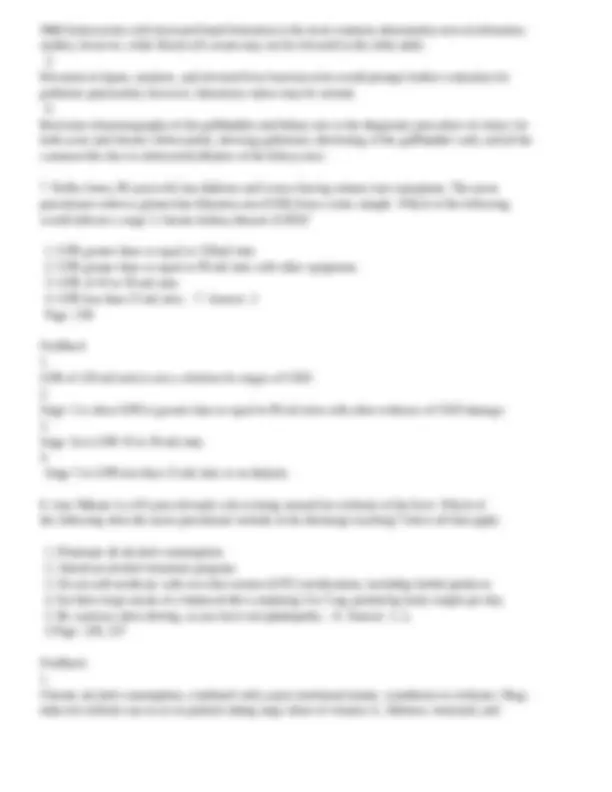
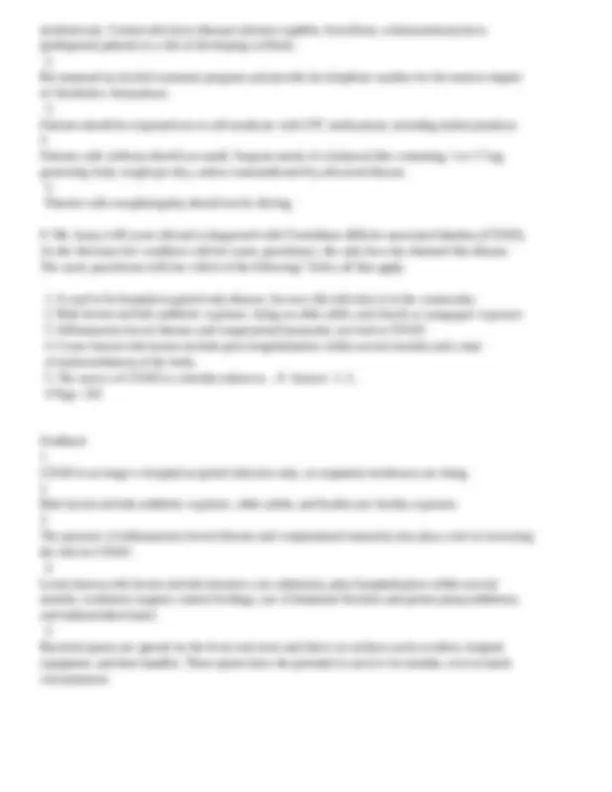
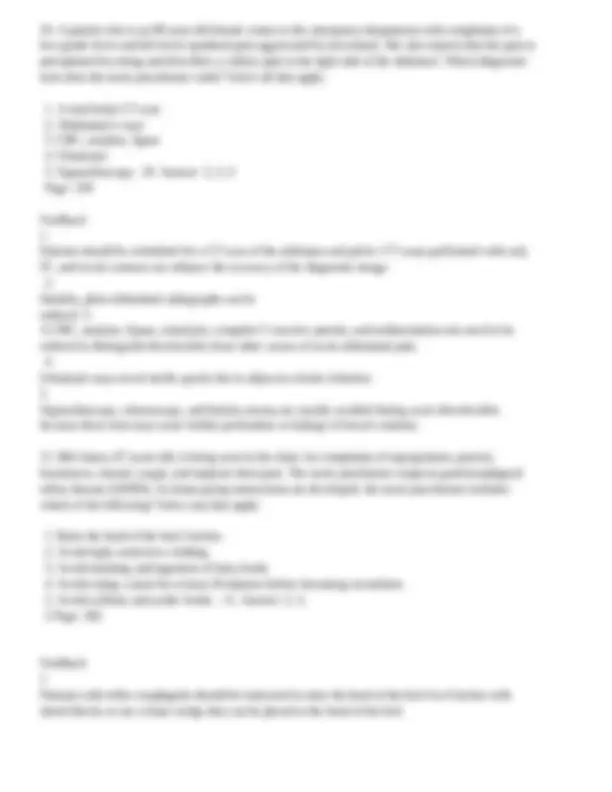
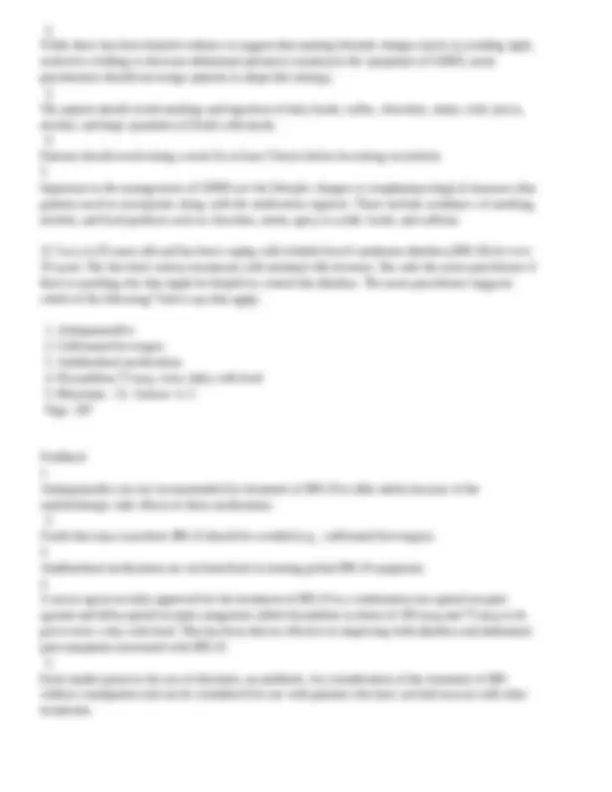
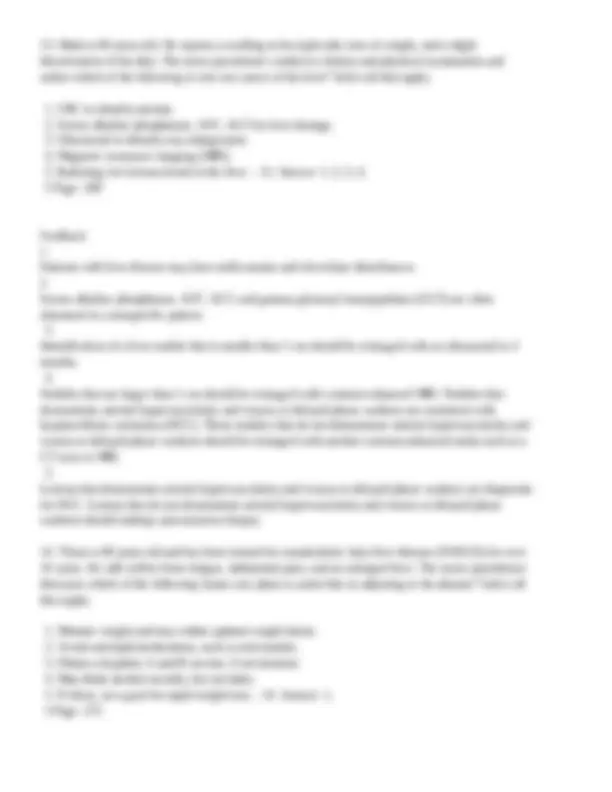
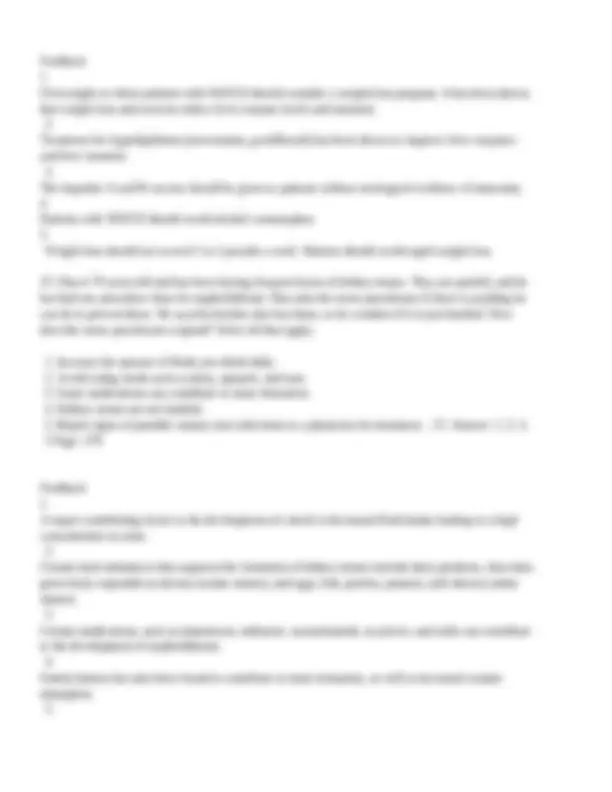
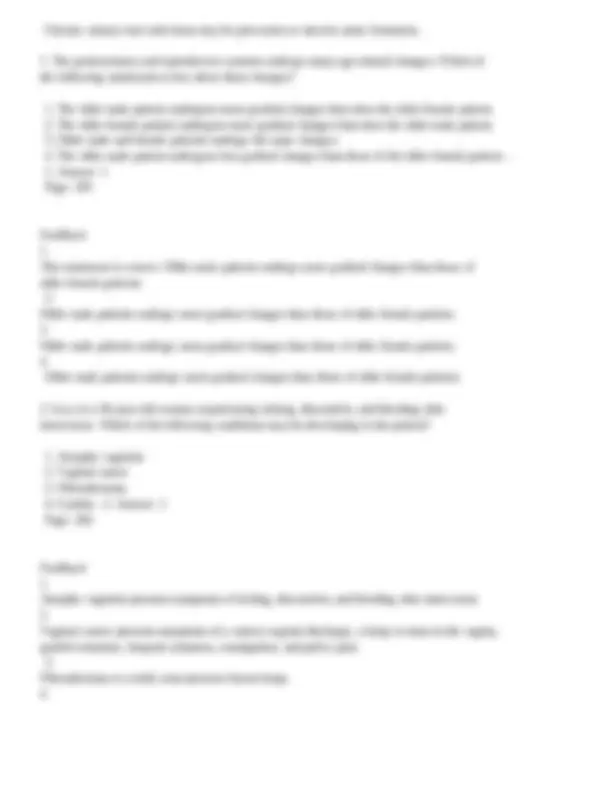
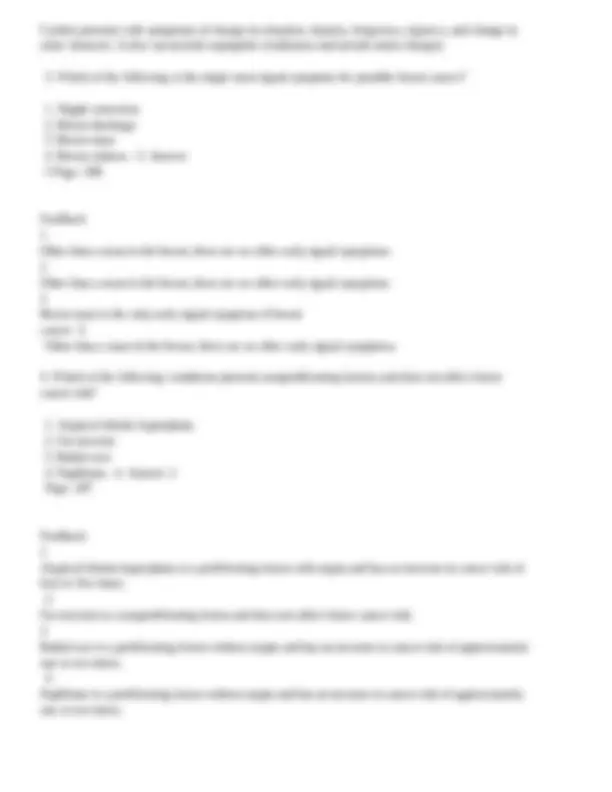
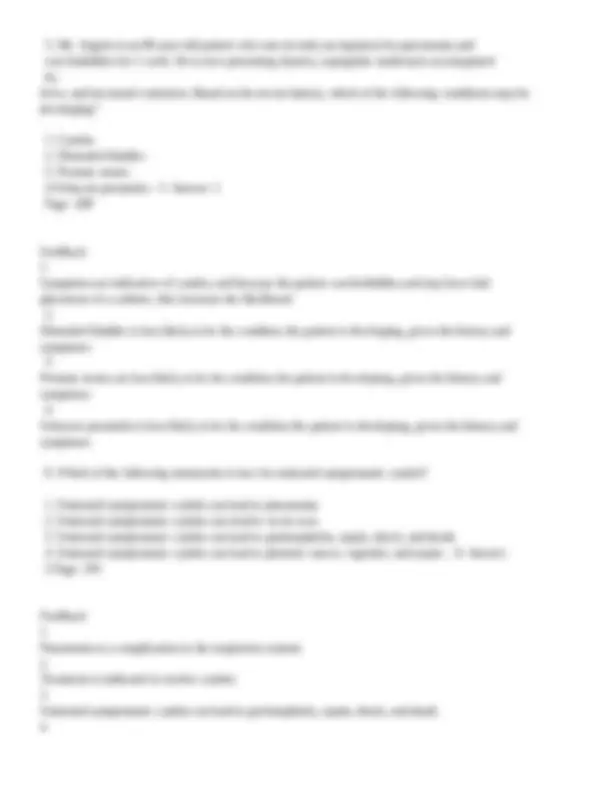
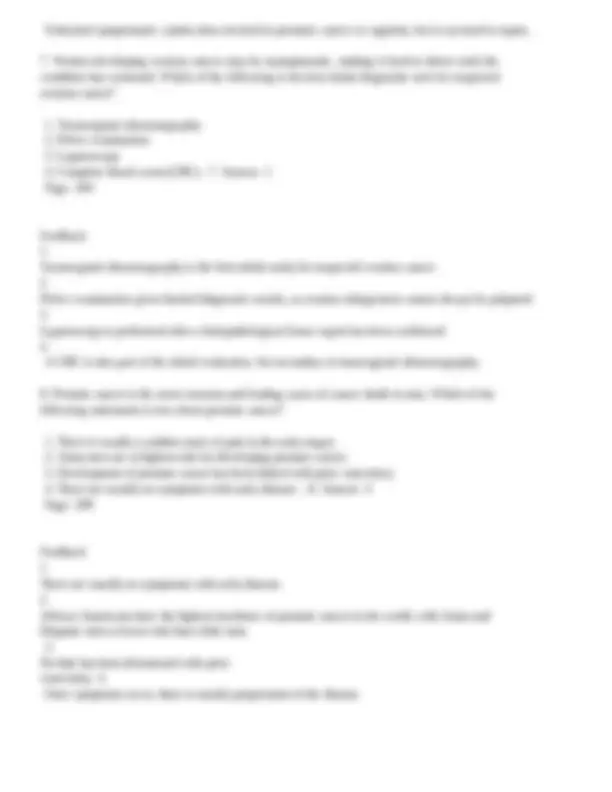
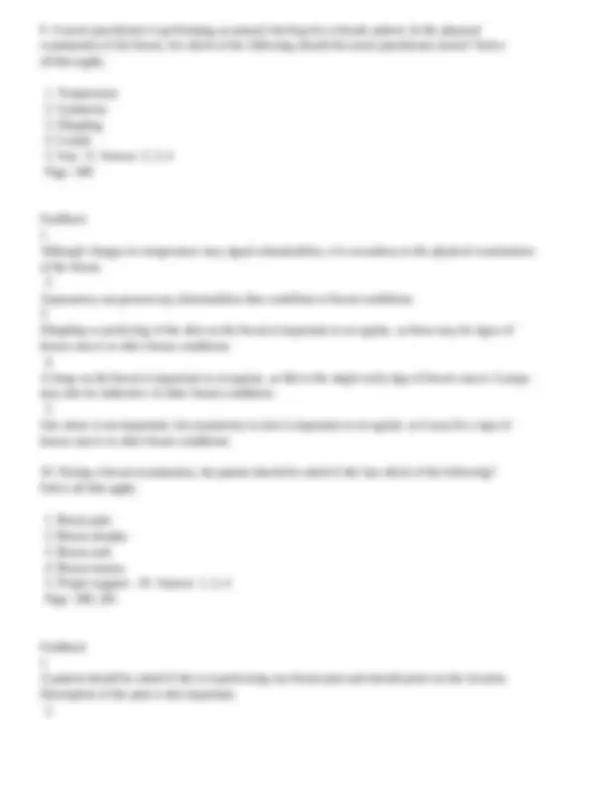
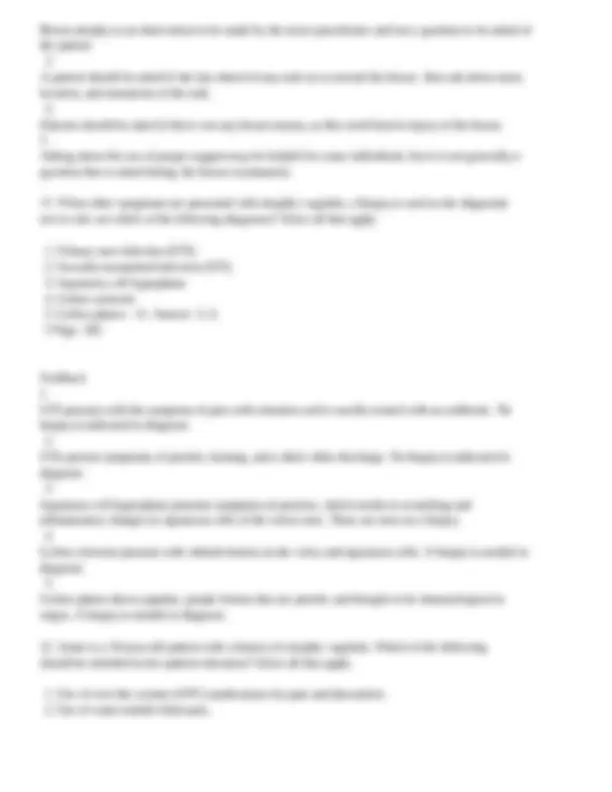
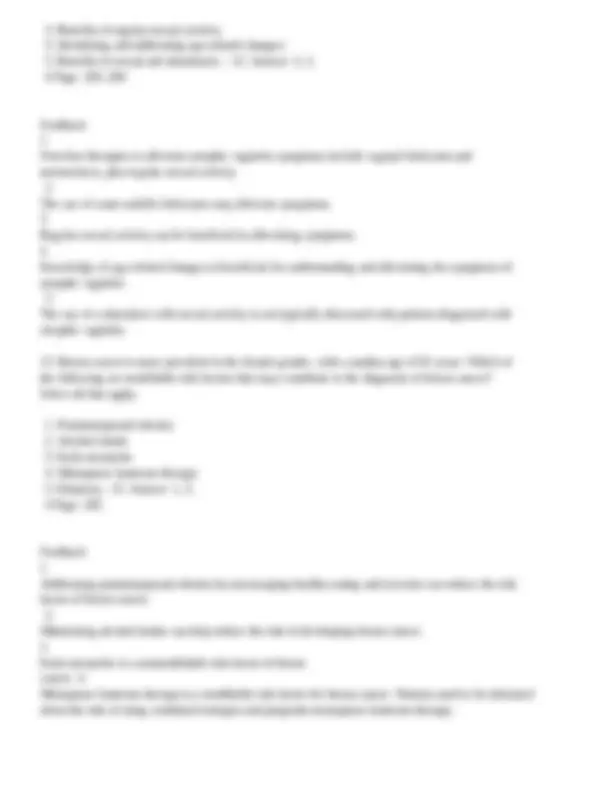
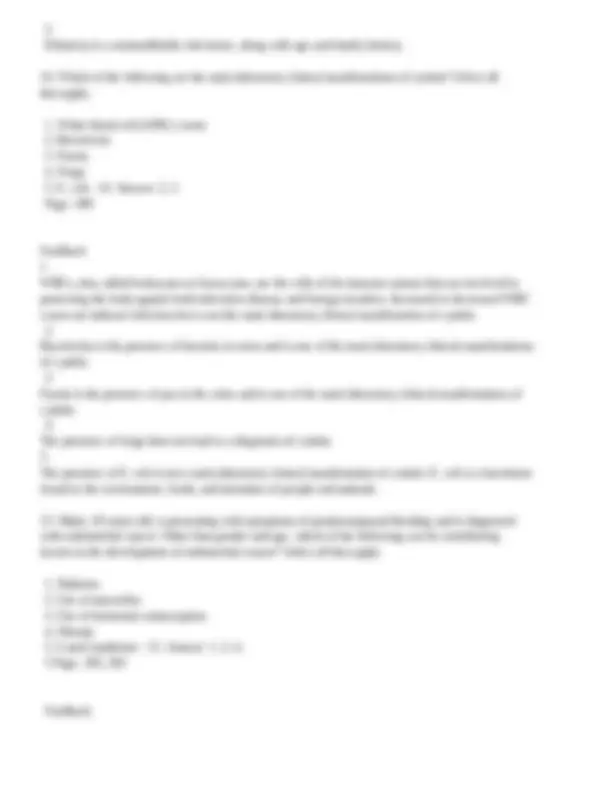
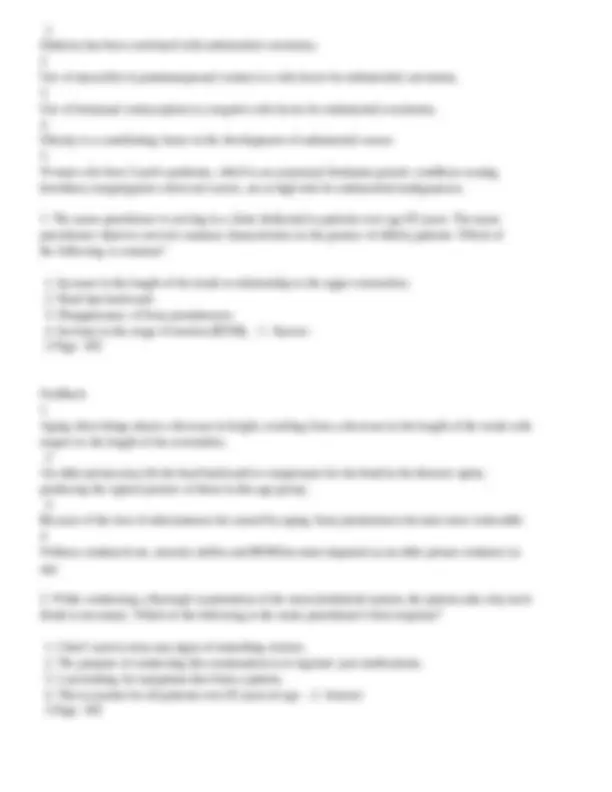
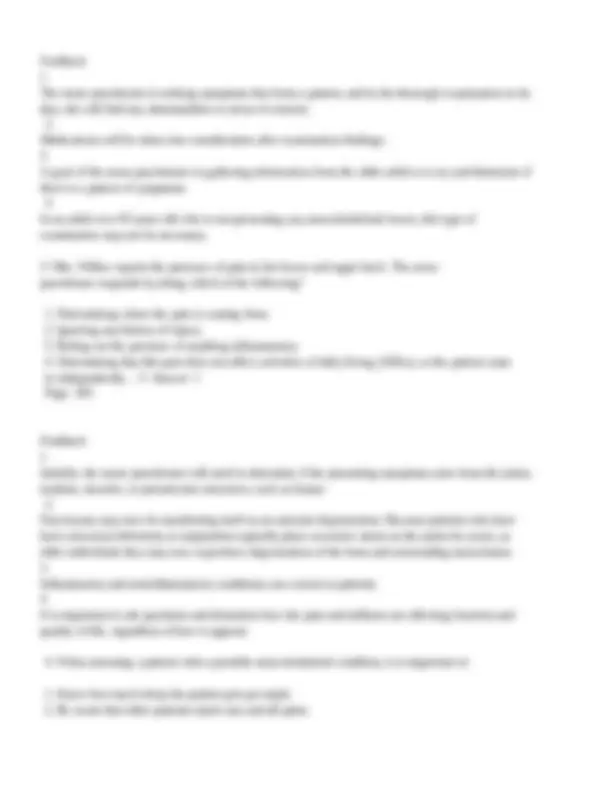
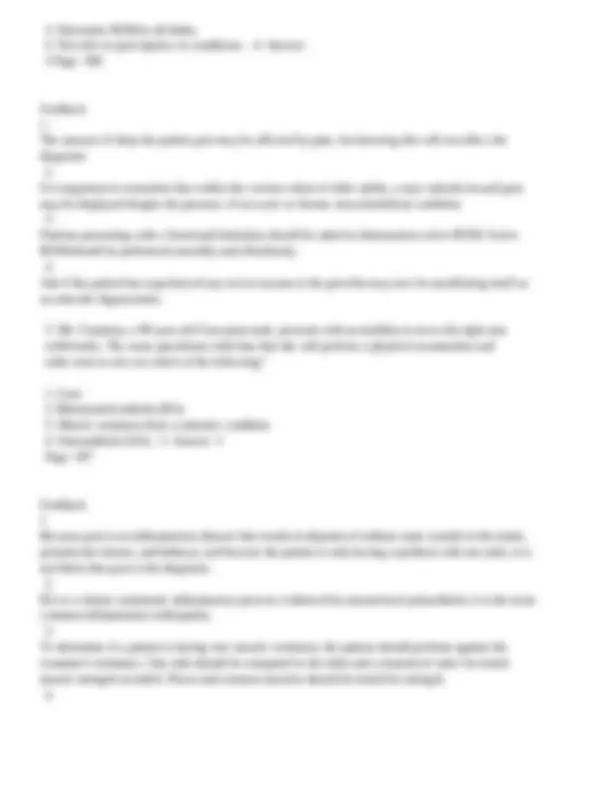
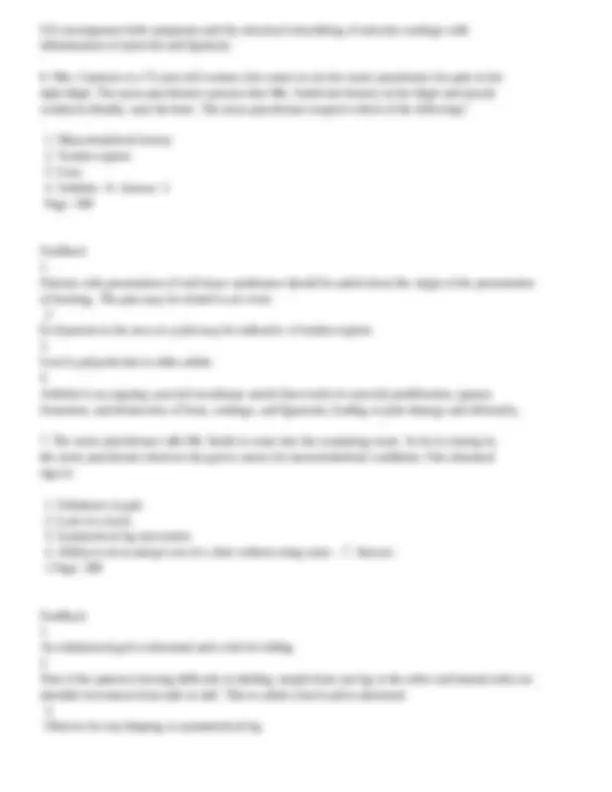
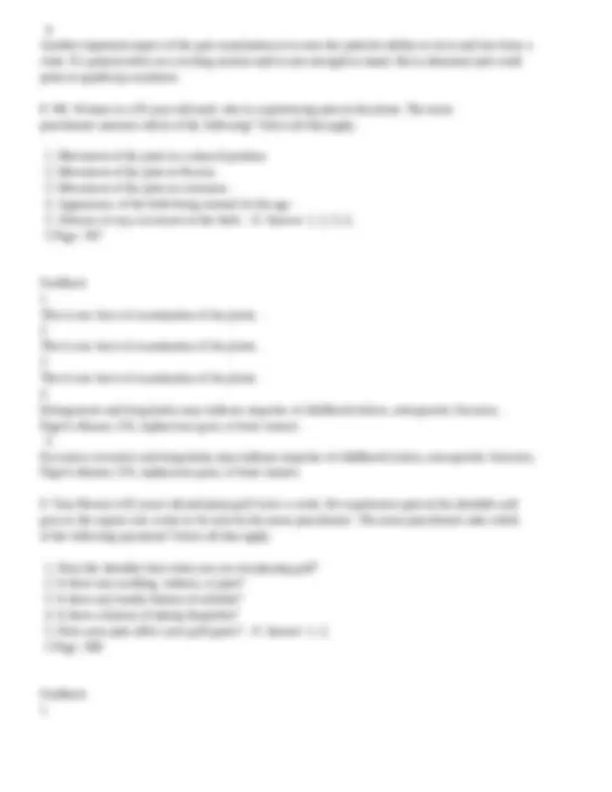
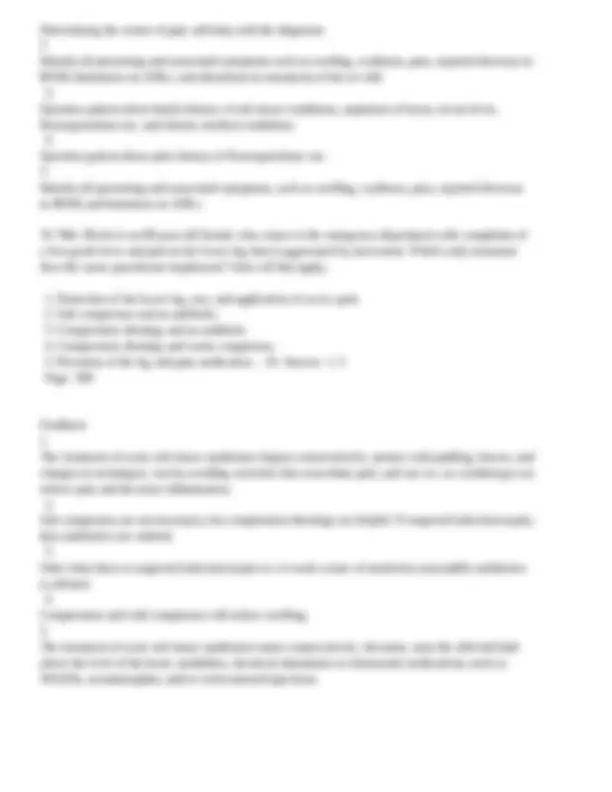


Study with the several resources on Docsity

Earn points by helping other students or get them with a premium plan


Prepare for your exams
Study with the several resources on Docsity

Earn points to download
Earn points by helping other students or get them with a premium plan
Community
Ask the community for help and clear up your study doubts
Discover the best universities in your country according to Docsity users
Free resources
Download our free guides on studying techniques, anxiety management strategies, and thesis advice from Docsity tutors
NURS 6540 Exam Study Guide | Advanced Practice Care of Frail Elders, Elders Final Review – Full Chapter Questions & Answers
Typology: Exams
1 / 159

This page cannot be seen from the preview
Don't miss anything!





























































































The clinician must be aware that all the systems interact and, in doing so, can increase the older person's vulnerability to illness/disease. 2. The nurse must not attribute symptoms only to the aging process.
There may be comorbidities accompanying this condition.
A CBC will not evaluate kidney function for a patient with renal disease.
A culture and sensitivity test reflects the presence of an infection and the antibiotic to which the organism is sensitive.
The calculation of creatinine clearance provides an estimation of renal function.
Uric acid level is elevated in the presence of gout.
The nurse practitioner should have a plan for the use of each test result value obtained.
When considering which laboratory tests to order, it is worth remembering the doctrine primum no nnocere—first, do no harm.
Once laboratory tests are available for review, tests results should be discussed with the patient, with abnormal test results interpreted for the aging individual and addressed with the patient and caregivers.
Any risks involved in laboratory testing must be considered concerning the patient's clinical condition and weighed against the test's expected benefits.
Knowledge of the bimodality of age onset of certain disease conditions will aid the advanced practice nurse in avoiding misdiagnosis or delay in diagnosis due to lack of recognition.
Symptoms of rheumatoid arthritis may be different depending on the age of the patient.
Heart disease, cancer, and diabetes combined are the most common morbidities in older patients.
Older patients with late-onset rheumatoid arthritis experience joint involvement more often in the larger joints, such as the shoulder, and they also experience systemic symptoms such as fever, malaise, weight loss, and depression. 2. Older patients may express symptoms in any other physical systems.
Patients more often experience arthritis in smaller joints.
Hirschsprung's disease is an obstruction of the colon in infancy. 2. Diarrhea is not associated with pancreatitis.
Appendicitis is more common in younger patients than in older patients.
A complete assessment will help differentiate signs of aging from disease.
All systems interact and can affect an existing condition. 3. Identifying underlying conditions will avoid undertreatment.
Attributing symptoms to aging can contribute to depression in an older person.
There are changes in the sympathetic response which contribute to the orthostasis and falls, as well as lack of hypoglycemic response.
Improved nutrition may not be the factor affecting health of elders. 2. Many factors can influence the health of elders, including lifestyle and medications.
decrease. Their physician does not seem concerned, and the couple is wondering why. How is it best for the nurse practitioner to respond? Select all that apply.
Individuals experience smaller variations in laboratory work than from the others in the same age group.
There are wider variations of laboratory results within a group of older people.
Laboratory values are determined by more than age and gender. 4. Laboratory values may vary as a result of nutrition, activity, and emotional status.
The reference values presented for the older adult cohort are not necessarily correct for the individual due to biochemical individuality.
Ordering more tests than needed violates the principle of "Do no harm."
MG is bimodal and can be found in younger women, as well as in both men and women.
Knowledge of the bimodality of age onset of certain disease conditions will aid the nurse practitioner in avoiding misdiagnosis or delay in diagnosis due to lack of recognition.
There should be a need for ordering a test and value attributed to the results.
The manifestations of illness and disease in the elderly can be very different, even if the underlying pathological process is the same as in younger individuals.
Blood studies are more valuable when assessing for an increase or decrease in values.
It is not helpful to use aging as an explanation for possible abnormal results.
If a change in treatment is appropriate, the least expensive alternative should be sought.
Significant disturbances in the same individual may be detected through serial laboratory tests.
The clinician must determine whether a value obtained reflects a normal aging change, a disease, or the potential for disease.
Current health policies are ever-changing to improve services for citizens.
Federal legislation is being proposed to increase health services.
The World Health Organization has determined that healthy lifestyle promotion works best when coupled with supportive environments, community action, and healthy public policy formation. 4. This does not include preventive and health-protective measures, nor actualization of one's health potential.
The nurse practitioner is concerned about health promotion, disease prevention, and early diagnosis.
The nurse practitioner may spend more time with the patient than the doctor is able to.
The nurse practitioner is prepared to diagnose and plan treatment for many conditions.
The nurse practitioner brings a holistic orientation to health and wellness development and possesses knowledge of developmental tasks and the wellness-illness continuum.
Although this botanical may not be approved by the U.S. Food and Drug Administration (FDA), its cost will depend on the distributor.
Medicare will only pay for A and B level recommendations that meet the USPSTF stringent evidence guidelines, leaving other beneficial interventions without coverage.
Opioids are not recommended for older patients.
It is important to use only prescribed and approved medications/treatments.
The objective is to decrease the use of the emergency department for falls.
There are many factors involved in the decision for an older adult to remain in the home.
Although it is useful to conduct home safety checks, they are not part of the Healthy People 2020 objectives.
The Healthy People 2020 program has set specific objectives for prevention in older adults; use of the Welcome to Medicare visit is one of those objectives.
The nurse practitioner develops a collaborative plan that includes consideration of the patient's health beliefs and goals.
The nurse practitioner considers present and anticipated levels of function.
Risks need to be considered in light of benefits offered by interventions.
The nurse practitioner may consider whether the patient is connected to a religious community but cannot prescribe or recommend any specific plan.
Many disorders in older adults encompass multiple risk factors that involve several systems and interventions to achieve outcomes; this presents a challenge when measuring and synthesizing evidence, and reporting outcomes.
The health benefits of regular physical activity are well documented and include flexibility.
Exercise increases muscle tone and mass.
Exercise uses calories from stored fat and allows for weight loss.
Exercise strengthens the cardiac muscle and thereby lowers blood pressure.
Exercise does not affect urinary output.
Each person is unique and may not respond the same to exercise.
Hobbies are enjoyable and give pleasure, while at the same time increasing activity.
Stretching routines are done slowly and to the level of endurance.
When the frail older person cannot ambulate, they can move other parts of their body such as core, arms, head, and neck. They may also do non-weight-bearing movements of legs and feet. 5. Movement, activity, and exercise can be done anywhere, anytime the individual desires. There is no need to join a group.
Active involvement in community activities does not reflect what the older person is eating.
The nurse practitioner needs the current state of nutrition to develop a plan for increasing or maintaining positive nutrition. 3.
Feedback
Older adults are less likely to practice safe sex and use condoms.
Older people may be at increased danger from STIs because of the decreased perception of risk.
Current sexual history may determine the need for continued screening for STIs, HPV, and cervical cancer.
Encounters may be with fellow travelers, locals, or commercial sex workers.
Using the patient's sexual history, explore patient needs, preferences, and medical or psychological obstacles to sexual expression.
The older person is susceptible to organisms that cause infection due to decreased immunity, nutrition, hydration, and other factors. 2. The influenza virus mutates each year and an updated version of the vaccine is needed to provide immunity. Influenza vaccine is now recommended annually for all adults over 50 years old, unless contraindicated. 3. Recently released Shingrix has been found to be more effective than the Zostavax, which was given previously. 4. Side effects are most often mild and localized. Viruses can cause serious or even lethal conditions.
Pneumococcal vaccine is recommended as follows: Administer one-time dose to PCV13-naïve adults at age 65 years, followed by a dose of PPSV23 12 months later.
Long flights in cramped areas increase the risk of thromboembolic events.
Increased air pollution is a significant problem in many countries and affects pulmonary function.
The medications needed may not be available in some countries in Europe. Medicare does not cover medications filled outside of the United States. 4. Some areas of the world continue to see cases of yellow fever, malaria, and other diseases. When going to a vulnerable area, proper immunizations are required. 5. Some of the physiological and psychosocial changes that can occur with aging pose special risks during travel. How a patient functions at home may not be indicative of how well he or she will function in an unfamiliar environment.
Although there may be some herbal supplements that can help with arthritis, this is not the best suggestion because it does not promote increased physical activity. 2.
Barriers are things that prevent or hinder patients from exercising.
Incentive is one kind of patient facilitator, like family support. 3. Positive self-efficacy is another kind of patient facilitator, like family support.
Facilitators are things that help a patient desire exercise and health promotion, so these are facilitators.
Back to Exercise is not the correct phrase for the program the ACSM designed.
Health and Wellness is not the correct phrase for the program the ACSM designed. 3. Exercise is Medicine is the correct phrase for the program the ACSM has designed to incorporate discussion of exercise into patient encounters. 4. Exercise is wellness is not the correct phrase for the program the ACSM designed. 5. Which of the following should nurse practitioners suggest to counter common patient excuses for not exercising? 1. Join a gym. 2. Find an exercise "buddy." 3. Take a 10-minute walk every day. 4. Go to the YMCA. - 5. Answer: 3 Page: 20 Feedback
Joining a gym is not the best suggestion to counter excuses not to exercise because having to go to the gym may become another excuse. There may also be financial and transportation issues adding to the reasons not to exercise.
Finding an exercise "buddy" may be helpful but still may impose the excuse of not being able to find one.
Taking a 10-minute walk every day is the best suggestion. With this suggestion a patient cannot make the excuse of not having time or equipment.
Going to the YMCA is not the best suggestion to counter excuses for the same reasons as joining a gym is not the best suggestion.
Starting slowly with low weights and high repetitions may be a good start but must be monitored or initiated by an appropriate medical professional for instruction in proper use. 2. A consultation with a personal trainer is not the best option because some trainers may not be familiar with chronic conditions. 3. Consulting a health-care provider for physical activity goals that are realistic and safe is the best option. 4. Starting with low repetitions but heavier weights is not a good way to start an exercise program because it may result in injury.